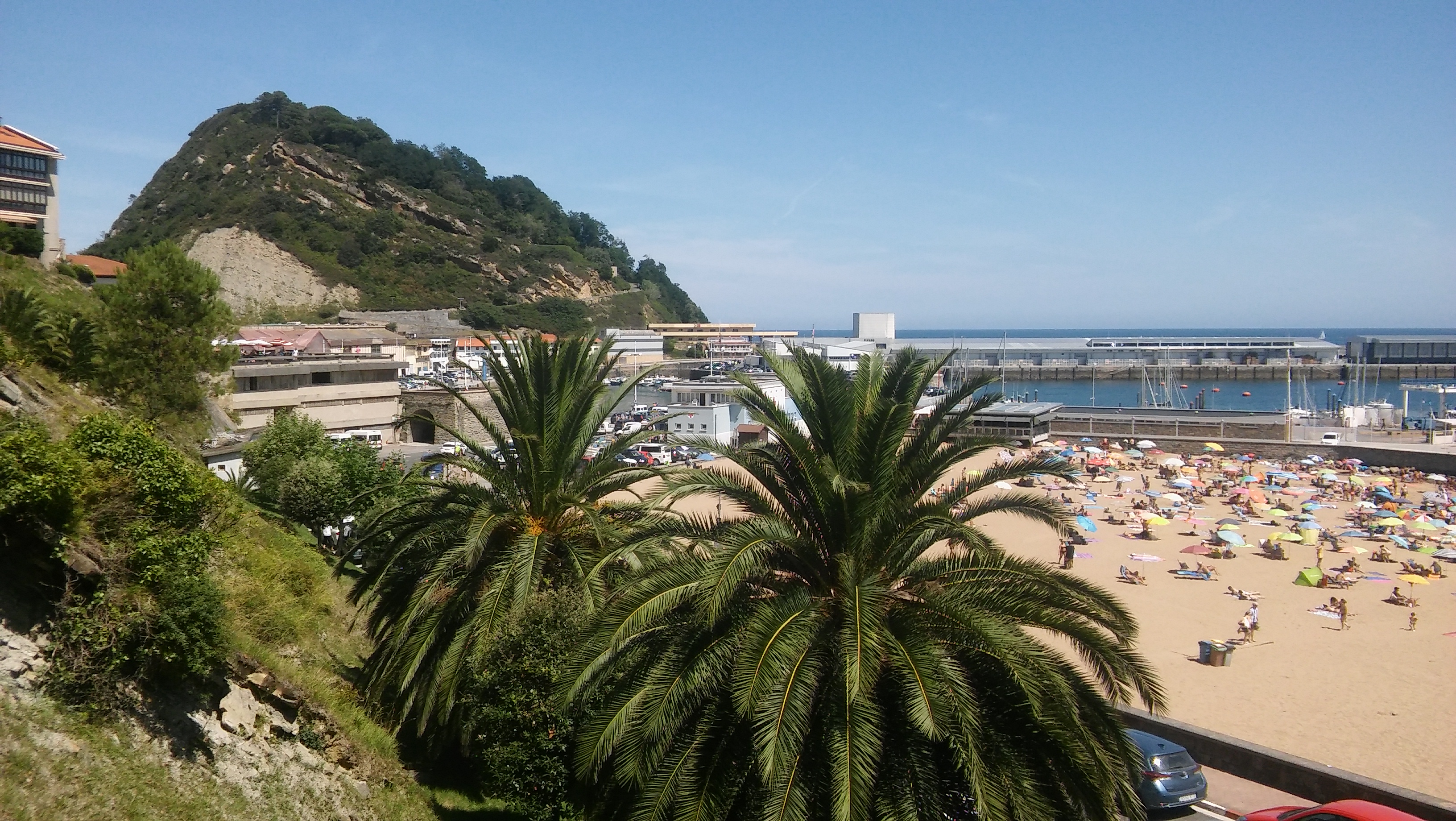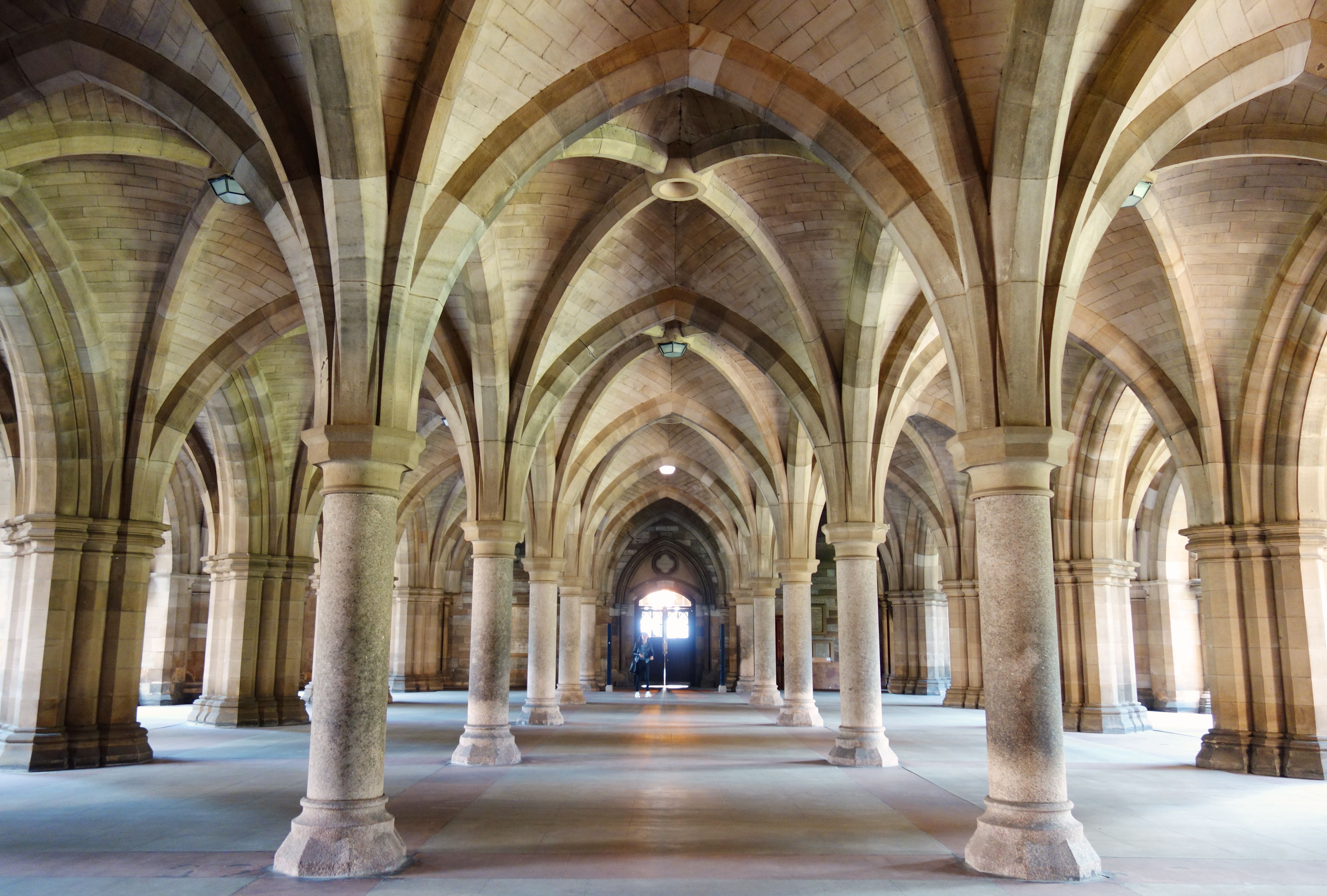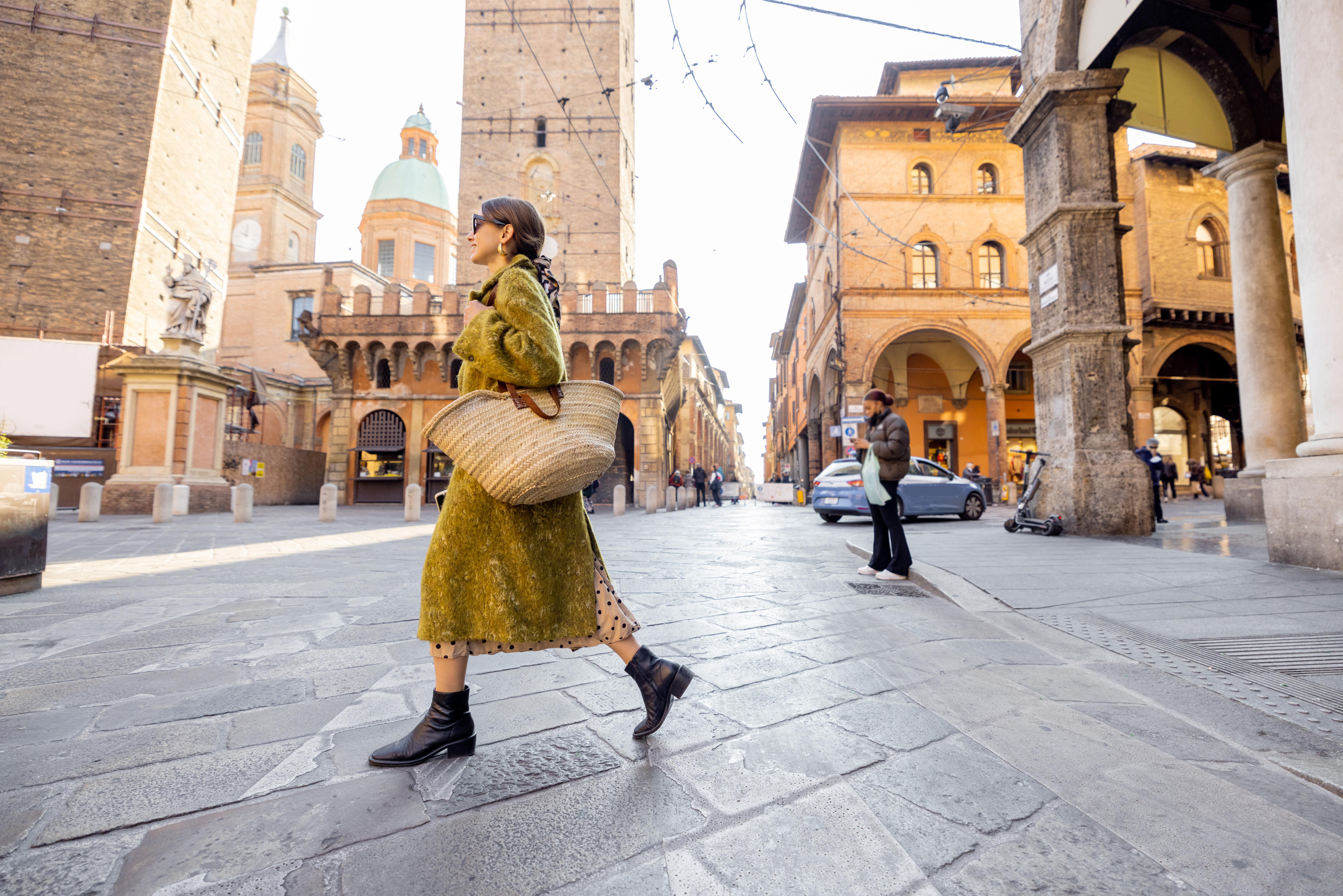44 Abandoned Landmarks That Are More Beautiful Than Ever
Journey with us into realms where human endeavor meets nature's persistent artistry. Picture majestic landmarks, once echoing with purpose, now cloaked in a silent, creeping beauty as ivy scales grand facades and wildflowers bloom in forgotten courtyards. These aren't mere ruins; they are breathtaking testaments to time's passage, each crumbling stone and weathered surface whispering tales of bygone eras, their haunting allure often more profound in decay than in their prime. We've been utterly mesmerized by these powerful stories of transformation and have significantly expanded our quest, now unveiling 44 mesmerizing abandoned landmarks across the globe. Prepare to discover how history, intertwined with nature's touch, creates scenes of unparalleled, poignant splendor.
1. Houtouwan Village – Shengshan Island, China
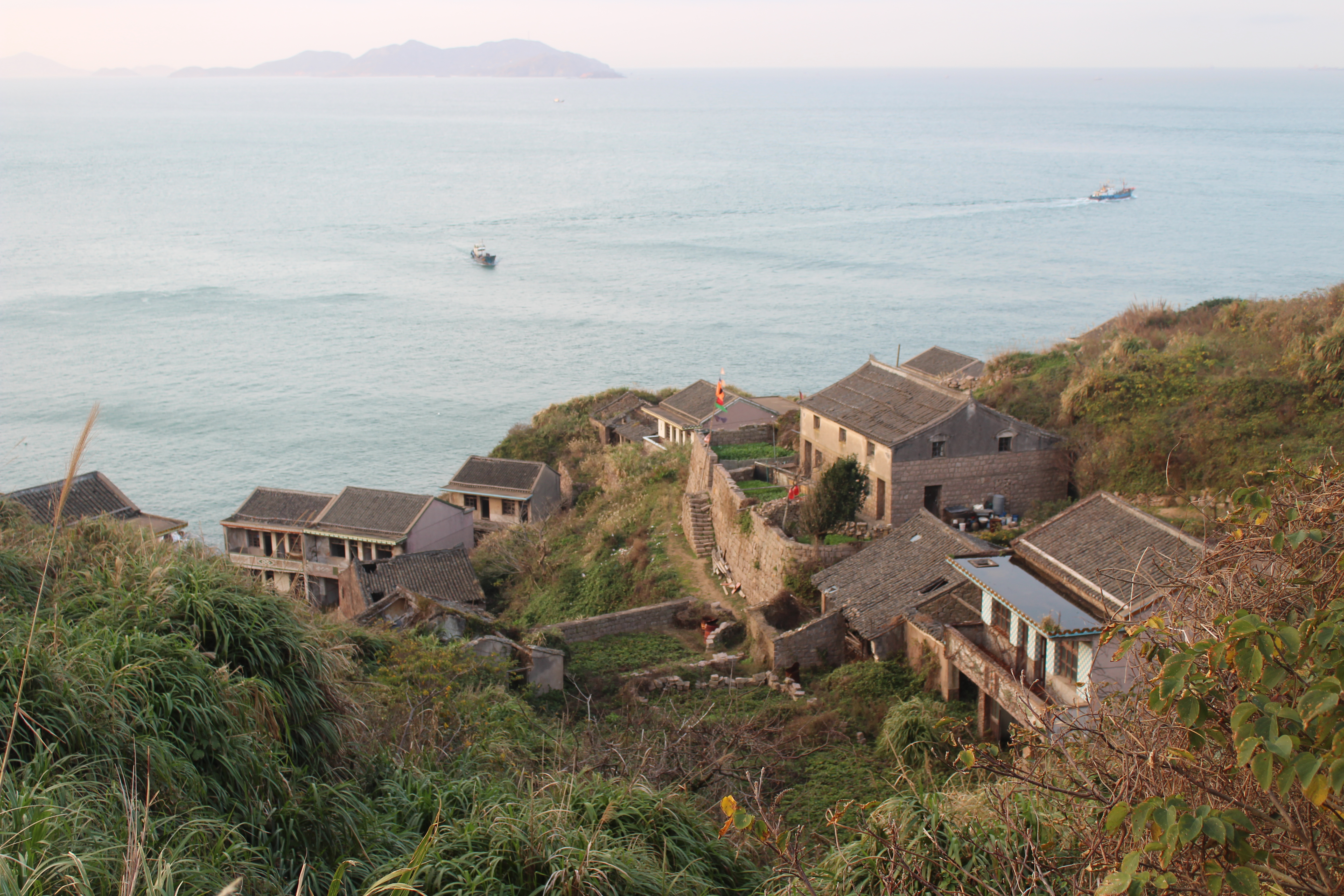
Once home to over 2,000 residents, Houtouwan was a bustling fishing village on the remote Shengshan Island, part of the Shengsi archipelago off China’s eastern coast. But by the 1990s, the hardships of isolation—difficult transport, limited access to education, and dwindling job opportunities—led its inhabitants to relocate to more accessible areas. Left to the elements, the village began to vanish beneath a cascade of green. Today, nature has almost completely reclaimed Houtouwan: thick ivy and moss blanket rooftops, vines slither through windows, and trees grow inside living rooms. The result is a stunning fusion of human craftsmanship and untamed wilderness. Tourists now trek here not for fishing, but for the serene silence, photo-worthy vistas, and the sense that time here has surrendered to the forest. Houtouwan is no longer a place to live—but it is absolutely a place to feel.
2. The Buzludzha Monument – Bulgaria
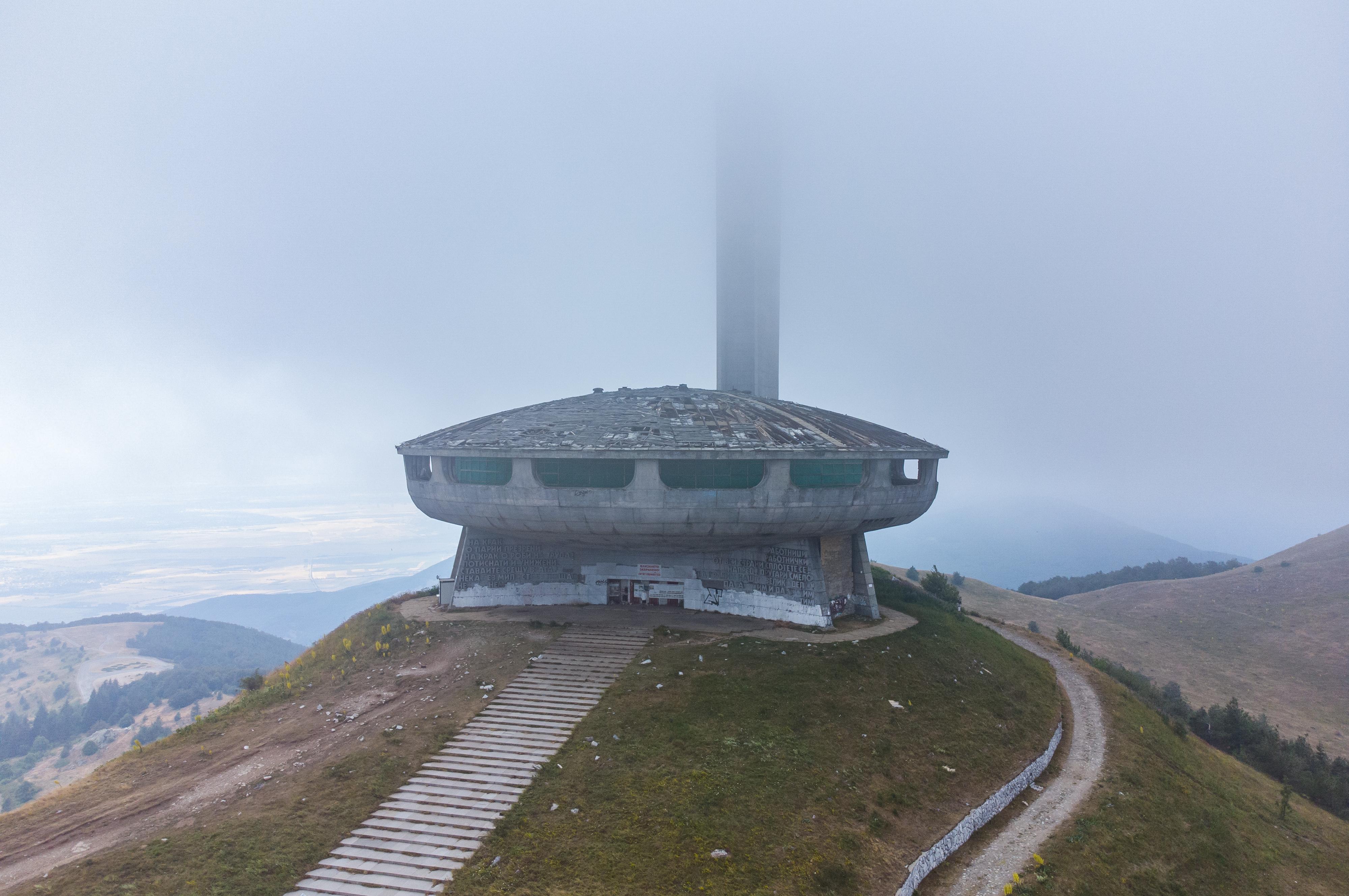
Standing like a fallen spaceship atop a remote Bulgarian peak, the Buzludzha Monument was once a dazzling showpiece of socialist pride. Completed in 1981, the structure celebrated the founding of the Bulgarian Social Democratic Party and featured sweeping murals, red star mosaics, and a grand circular auditorium. Its brutalist exterior, shaped like a giant concrete saucer, was meant to symbolize the strength and futuristic vision of communism. But when the regime fell just a few years later, Buzludzha was abandoned to the wind and snow. Today, its deteriorating walls, graffiti-tagged columns, and gaping holes in the ceiling create a sense of epic decay. Yet even in ruin, it commands awe—especially at sunrise or dusk, when fog drapes the mountain and the skeletal remains glow like a relic of an alien civilization. It’s a haunting, cinematic monument to lost ideologies and architectural ambition.
3. Craco – Basilicata, Italy
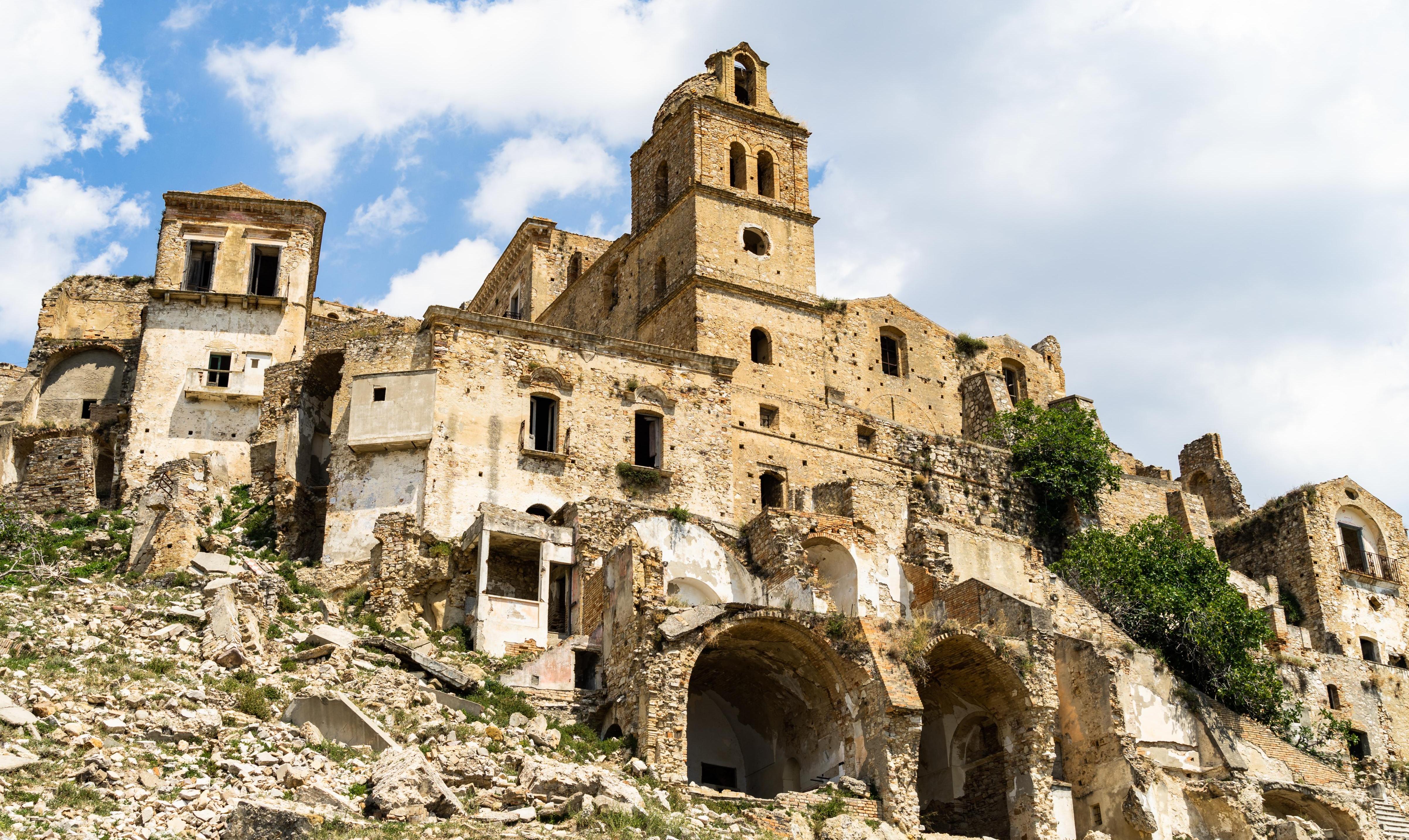
Craco isn’t just an abandoned town—it’s a ghostly vision of medieval elegance frozen in mid-collapse. Perched precariously on a hilltop in Italy’s Basilicata region, this once-bustling village dates back to the 8th century. Its strategic location made it ideal for defense, but it also rendered it highly susceptible to natural disasters. Landslides in the 1960s, followed by earthquakes and floods, finally forced residents to evacuate. What remains is a hauntingly intact skyline of towers, chapels, and stone homes that seem to gaze over the valley like petrified guardians. The interiors of buildings still bear traces of everyday life: rusted iron beds, broken pottery, faded murals. Craco’s unique appearance has drawn filmmakers, making it the backdrop for numerous movies and a haven for photographers and history buffs. As the sun sets behind its crumbling bell tower, Craco’s beauty only grows deeper—rich in silence, memory, and mystery.
4. Kolmanskop – Namib Desert, Namibia
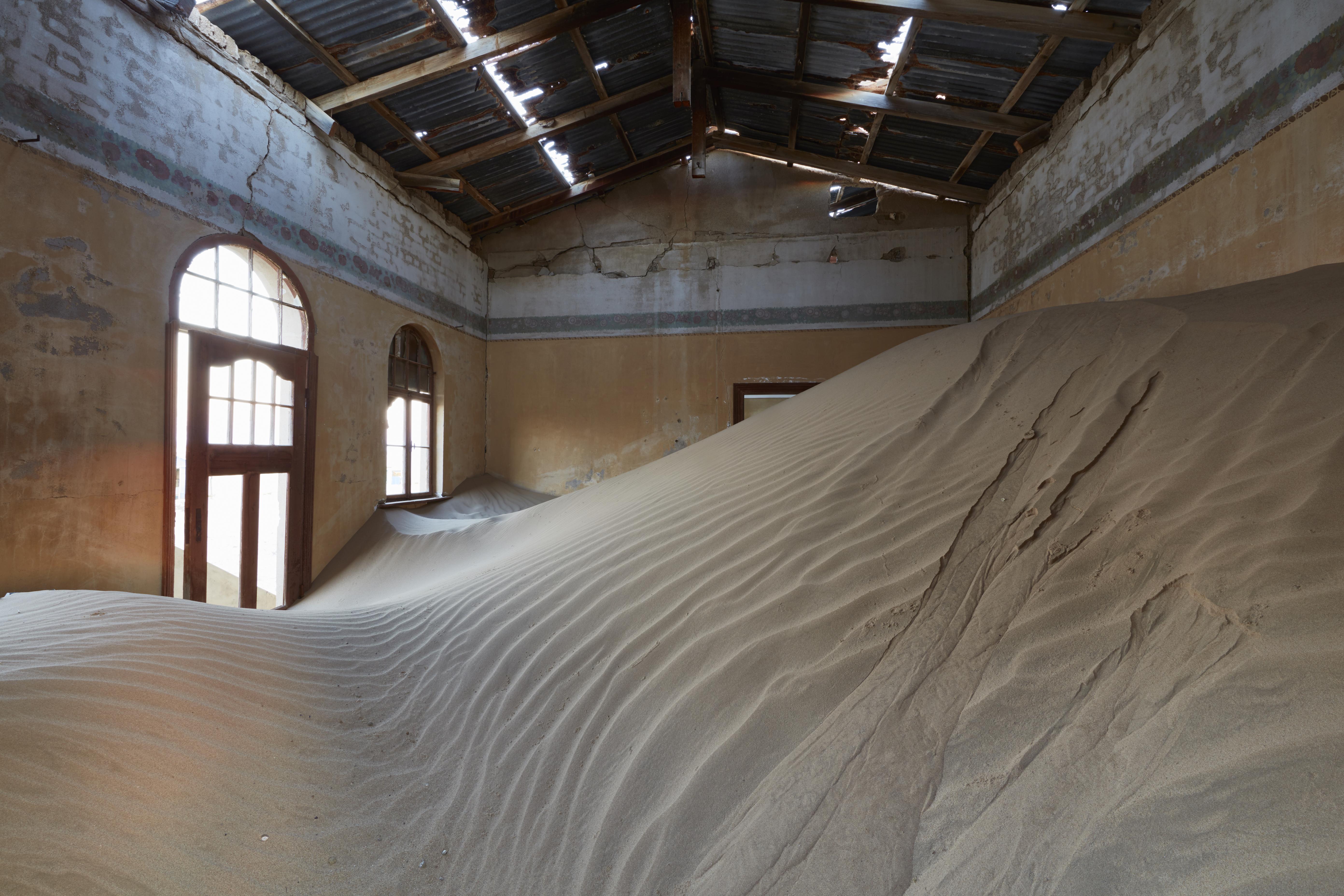
In the early 1900s, Kolmanskop sprang up almost overnight in the harsh Namib Desert after diamond miners struck it rich. German colonialists brought with them luxuries unheard of in the desert—ballrooms, a casino, a hospital, and even the first x-ray machine in the Southern Hemisphere. But as the diamonds dwindled by the 1950s, so did the population, and Kolmanskop was soon left to the sands. Today, it’s one of the world’s most surreal ghost towns. The desert, relentless and poetic, has crept into every room—dining halls filled waist-deep with fine grains, pianos silenced under sand drifts, and staircases leading to dunes instead of doorways. The pastel walls, worn by time, create an eerie pastel dreamscape that feels like a surrealist painting come to life. A popular subject for photographers, Kolmanskop is a poignant reminder of how quickly wealth can vanish—and how beautifully nature writes over what we leave behind.
5. Garnet Ghost Town – Montana, USA
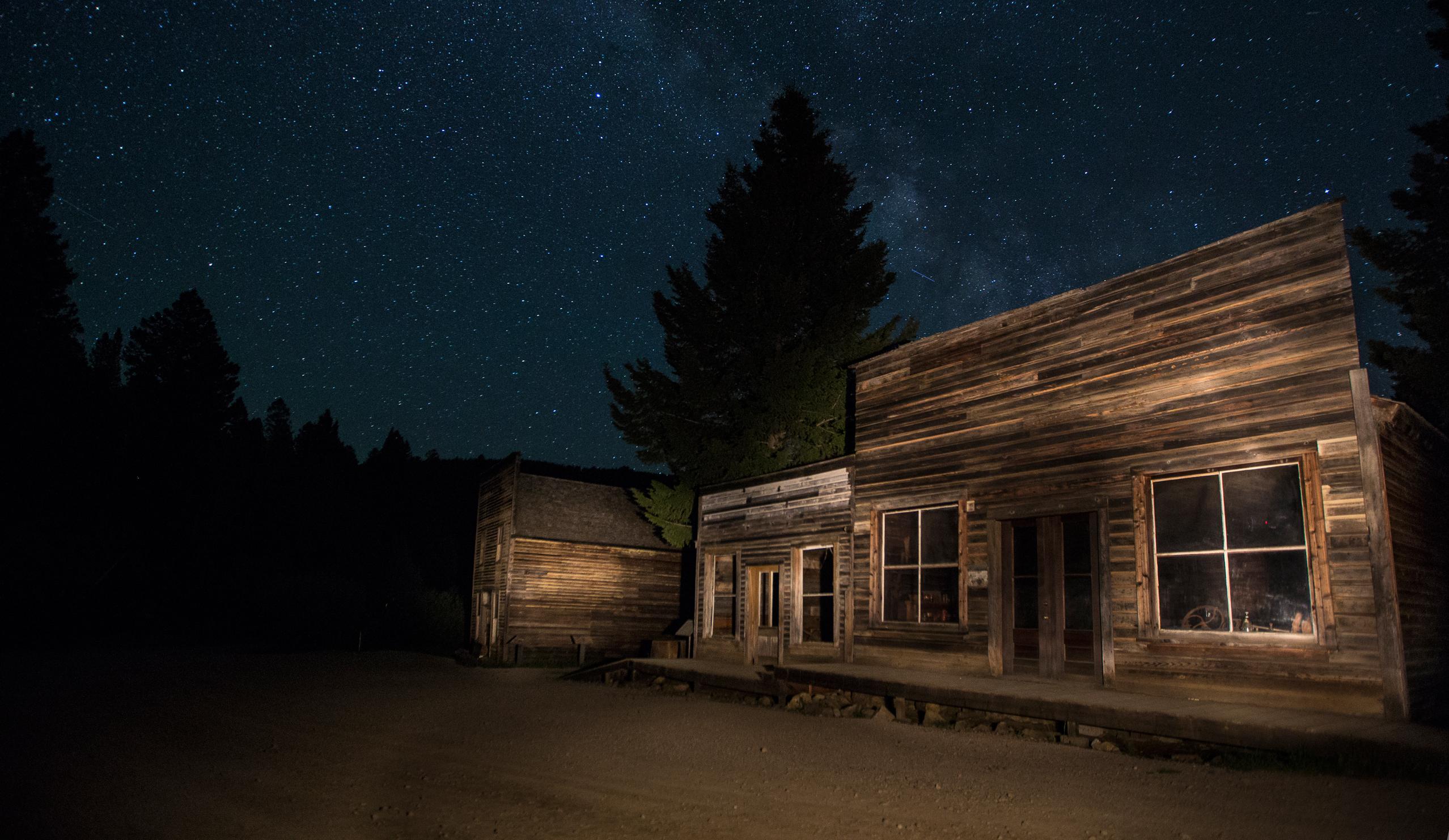
Hidden in the forested hills of western Montana, Garnet is one of the best-preserved ghost towns in the American West. Unlike more commercialized frontier relics, Garnet retains an authenticity that makes it feel as though the last miner just stepped out for a smoke and never returned. Founded in the 1890s during Montana’s gold rush, Garnet once hosted over 1,000 people, complete with saloons, hotels, and general stores. But when the gold dried up and World War I lured men elsewhere, the town emptied. Today, thanks to preservation efforts, visitors can walk among weathered cabins, peek into the dilapidated Wells Hotel, or hear the wind whistle through the abandoned jail. Set against a backdrop of pine-covered hills, Garnet feels less like a ruin and more like a time capsule—one that whispers stories of hardscrabble lives, boom-and-bust dreams, and the enduring romance of the American frontier.
6. Hashima Island – Nagasaki, Japan
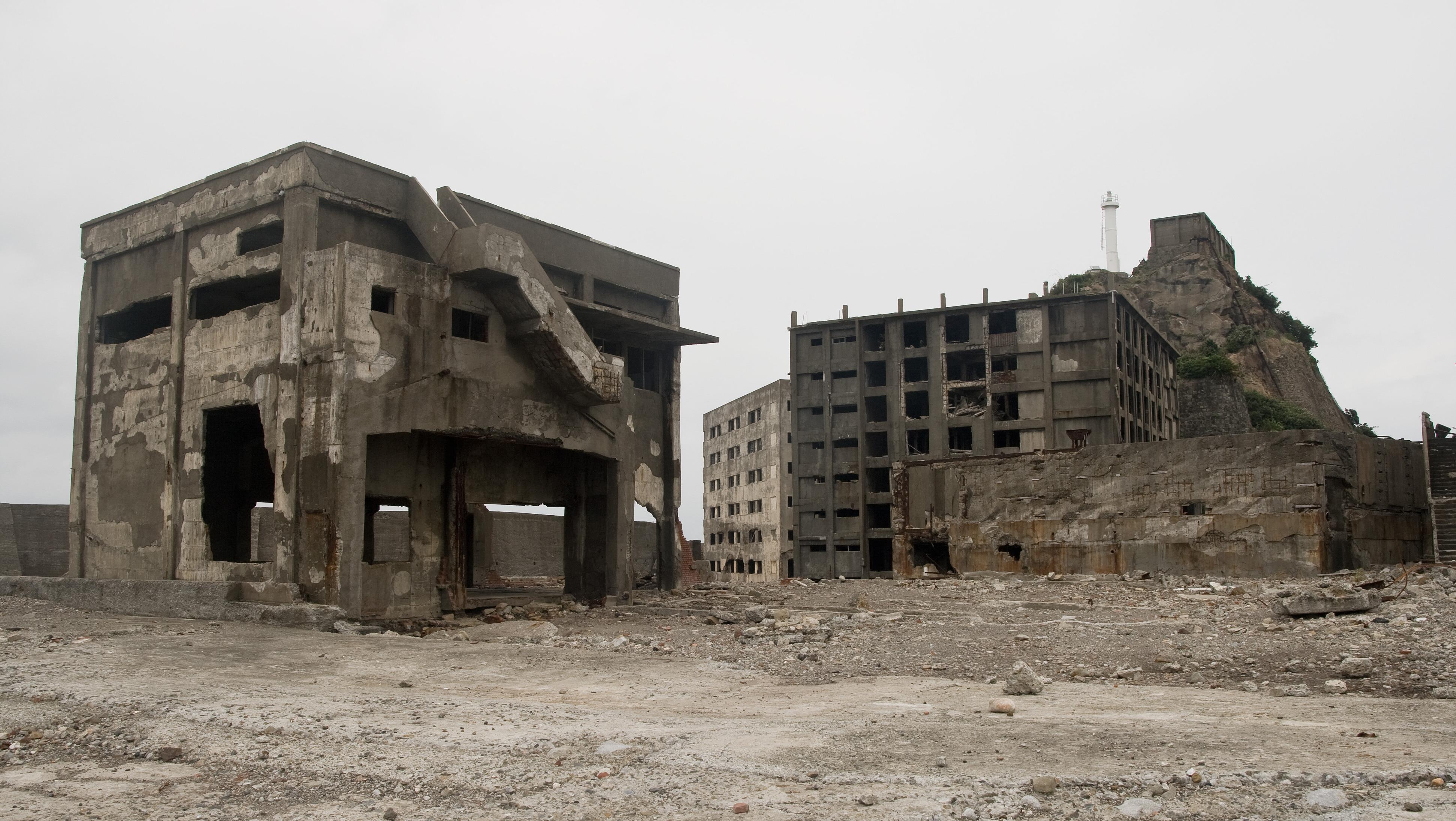
From afar, Hashima Island resembles a derelict battleship adrift in the sea—hence its nickname, “Gunkanjima” or Battleship Island. Once a bustling coal-mining colony, the island was operated by Mitsubishi from the 1880s until 1974. At its peak, more than 5,000 people lived in its high-rise concrete apartment blocks, packed tightly onto the tiny, sea-walled island. When petroleum overtook coal in the 1970s, operations ceased, and residents were evacuated almost overnight. Now, Hashima sits eerily quiet in the sea, its windowless buildings collapsing inward, vines creeping through concrete corridors. The juxtaposition of industrial decay and oceanic isolation makes it profoundly haunting. It’s also steeped in complex history—some workers during World War II were forced laborers, adding a darker layer to its legacy. Hashima has since gained global attention, featuring in James Bond’s Skyfall and inspiring urban explorers to uncover its forgotten stories—though only parts of the island are now accessible to the public via guided tours.
7. Beelitz-Heilstätten – Brandenburg, Germany
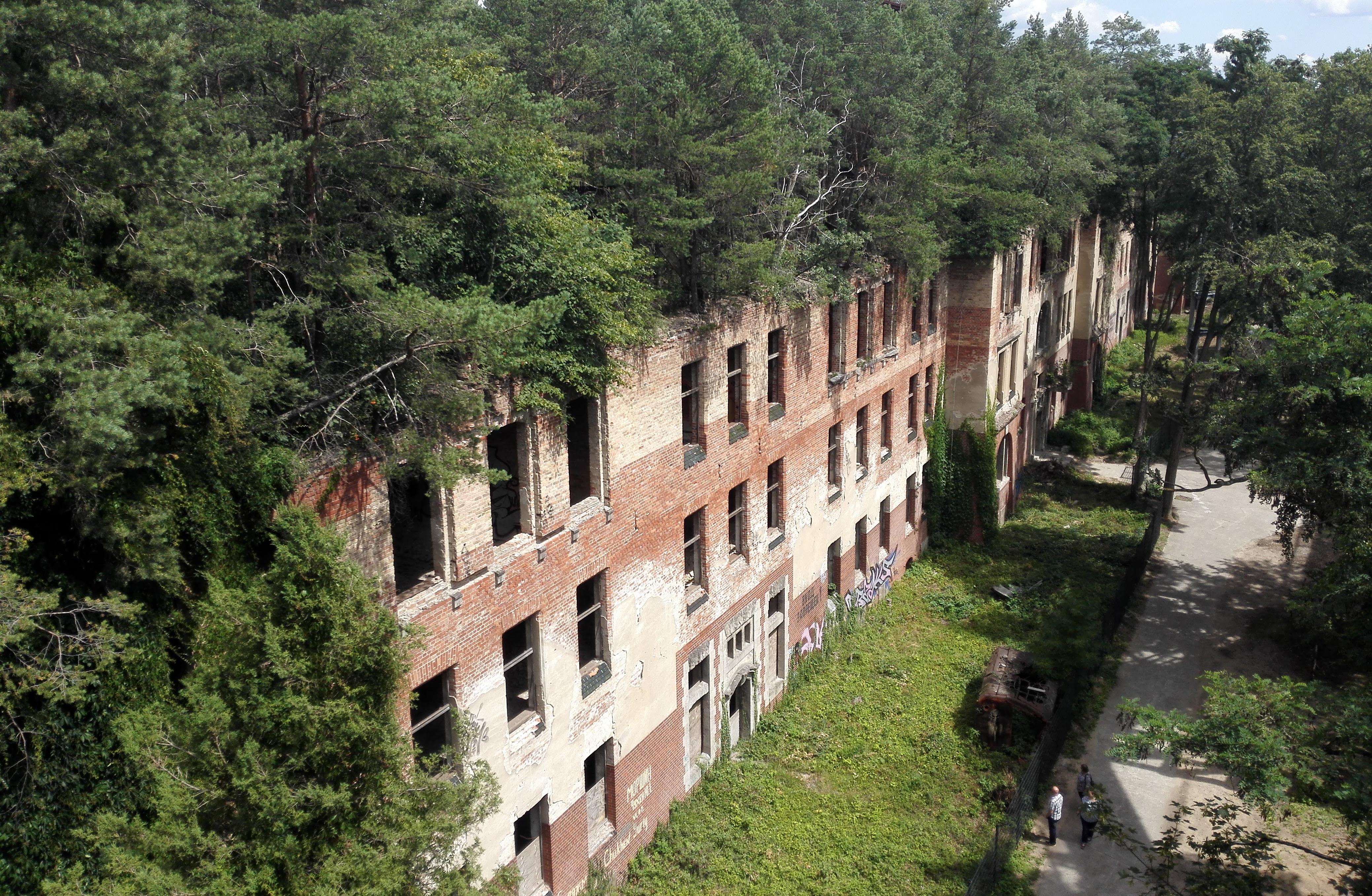
Just outside Berlin lies Beelitz-Heilstätten, a massive medical complex built in the late 19th century as a tuberculosis sanatorium. Over the decades, it transformed into a military hospital used during both World Wars, even treating a wounded Adolf Hitler in 1916. After Germany’s reunification, much of the site was abandoned, and that’s when its haunting beauty began to bloom. Ivy coils around stairwells, roots burst through broken floor tiles, and vines spill through shattered stained-glass windows. Entire wings of operating theaters and patient wards lie eerily intact, eerily silent. Sunlight pierces through broken ceilings, illuminating tiled corridors that feel like something out of a dream—or a ghost story. A portion of Beelitz has since been restored, but the remaining abandoned buildings have attracted photographers, thrill-seekers, and film crews (parts of The Pianist and Valkyrie were shot here). It’s a place where medicine, memory, and nature entwine in the most poetic decay imaginable.
8. Poveglia Island – Venice, Italy
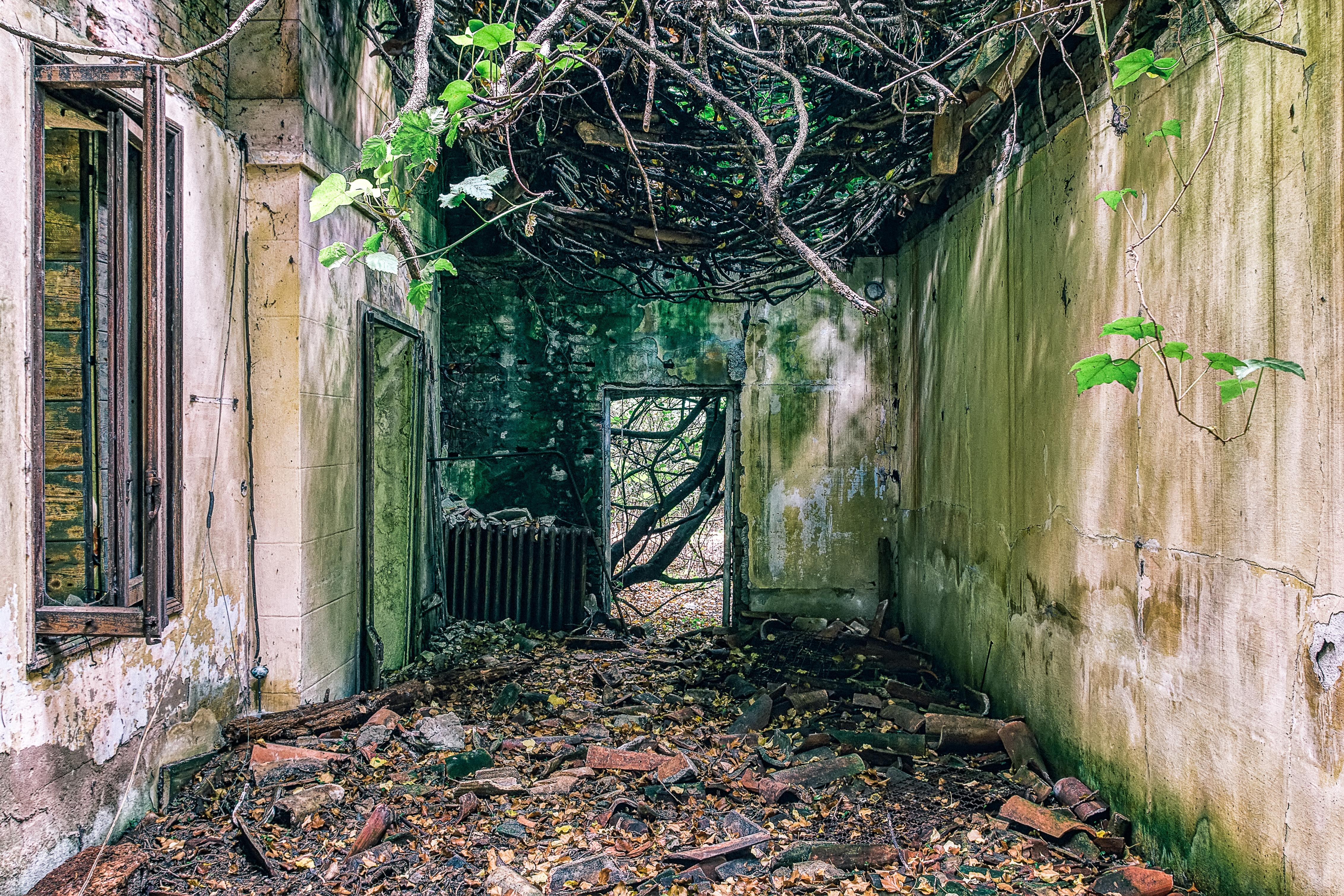
Floating in the quiet Venetian Lagoon, just a short boat ride from the grandeur of Venice itself, Poveglia Island is one of Italy’s most infamous and visually haunting abandoned landmarks. Though serene from a distance, its overgrown courtyards and collapsing structures tell a darker story—one that blends plague, paranoia, and the passage of time. In the 18th century, Poveglia was used as a quarantine station for ships suspected of carrying infectious diseases. It’s said that thousands of plague victims died here, their remains interred in mass graves beneath the soil. Later, in the early 20th century, the island housed a psychiatric hospital, where rumors of unethical experiments and ghostly sightings further cemented its sinister reputation. Today, Poveglia is completely uninhabited, a hauntingly beautiful patch of green and crumbling architecture embraced by shimmering blue waters. The buildings, now skeletal ruins, are choked with ivy and strewn with decaying medical equipment, while trees grow through collapsed roofs. Despite its eerie history, the island’s contrast of tranquil nature and decaying man-made structures creates an unexpectedly poetic, melancholic beauty. It's a place suspended between myth and reality—a haunting jewel of the Venetian archipelago.
9. Varosha – Famagusta, Cyprus
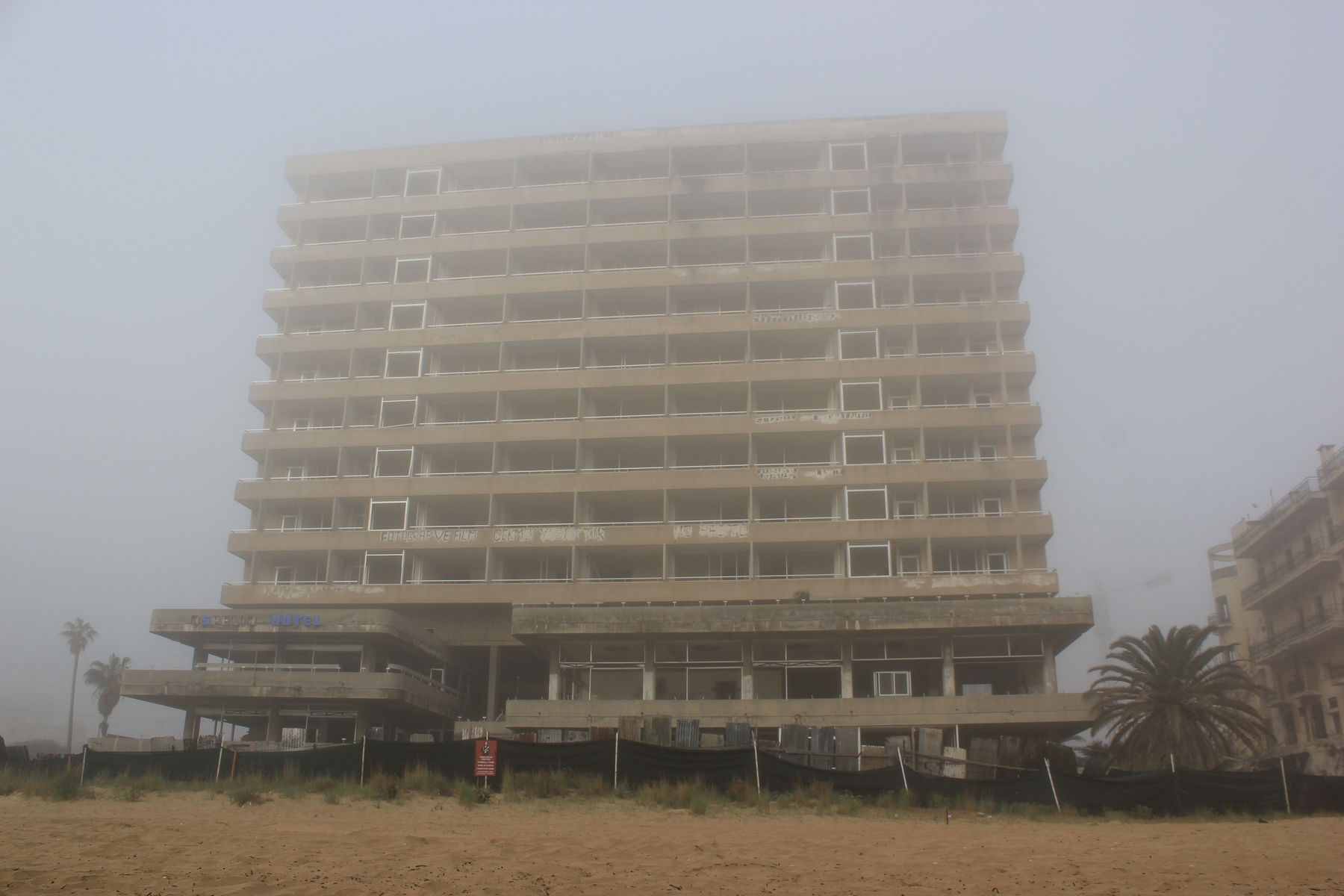
Once the glittering jewel of Cyprus’s tourism industry, Varosha was the place to be in the early 1970s. Celebrities lounged on its sun-soaked beaches, high-rise hotels lined the coast, and boutiques buzzed with life. But all of that came to a sudden halt in 1974, when Turkey invaded Cyprus following a military coup. The residents of Varosha fled overnight, leaving beach towels on chairs and store mannequins dressed in the latest '70s fashion. The Turkish military fenced off the entire district, turning this lively resort town into an untouched time capsule—off-limits to civilians for nearly five decades. Today, the chain-link fences have started to open, revealing a strangely preserved city frozen in time. Cracked sidewalks are now littered with wildflowers, palm trees stretch unchecked into the streets, and rusted hotel signs still bear the names of long-defunct luxury brands. The Mediterranean continues to lap at Varosha’s shorelines, as if nothing changed, even as the city behind it slumbers in silence. With recent partial reopenings, curious travelers can now glimpse this lost paradise, where the glamour of the past meets the gravity of history.
10. Belchite – Aragón, Spain

Belchite is a town that doesn’t pretend the past never happened—instead, it wears its scars with solemn grace. Located in the Spanish region of Aragón, Belchite was the site of a brutal battle during the Spanish Civil War in 1937. The fighting reduced the village to rubble, and instead of rebuilding, a new town was constructed nearby. The ruins of the old Belchite were left as they were—an intentional, open-air monument to the horrors of war. Walking through Belchite today feels like stepping into the aftermath of an ancient storm. Crumbling baroque churches still reach toward the sky, their bell towers pierced with bullet holes. Narrow alleys wind past collapsed homes and arched windows that frame only blue sky. The silence here is heavy, but it’s not empty—it vibrates with memory. The site has since become a magnet for artists, historians, and even filmmakers, drawn to its haunting beauty and its refusal to forget. In preserving its ruins, Belchite has transformed its tragedy into a sacred, unforgettable work of historical art.
11. Pyramiden – Svalbard, Norway
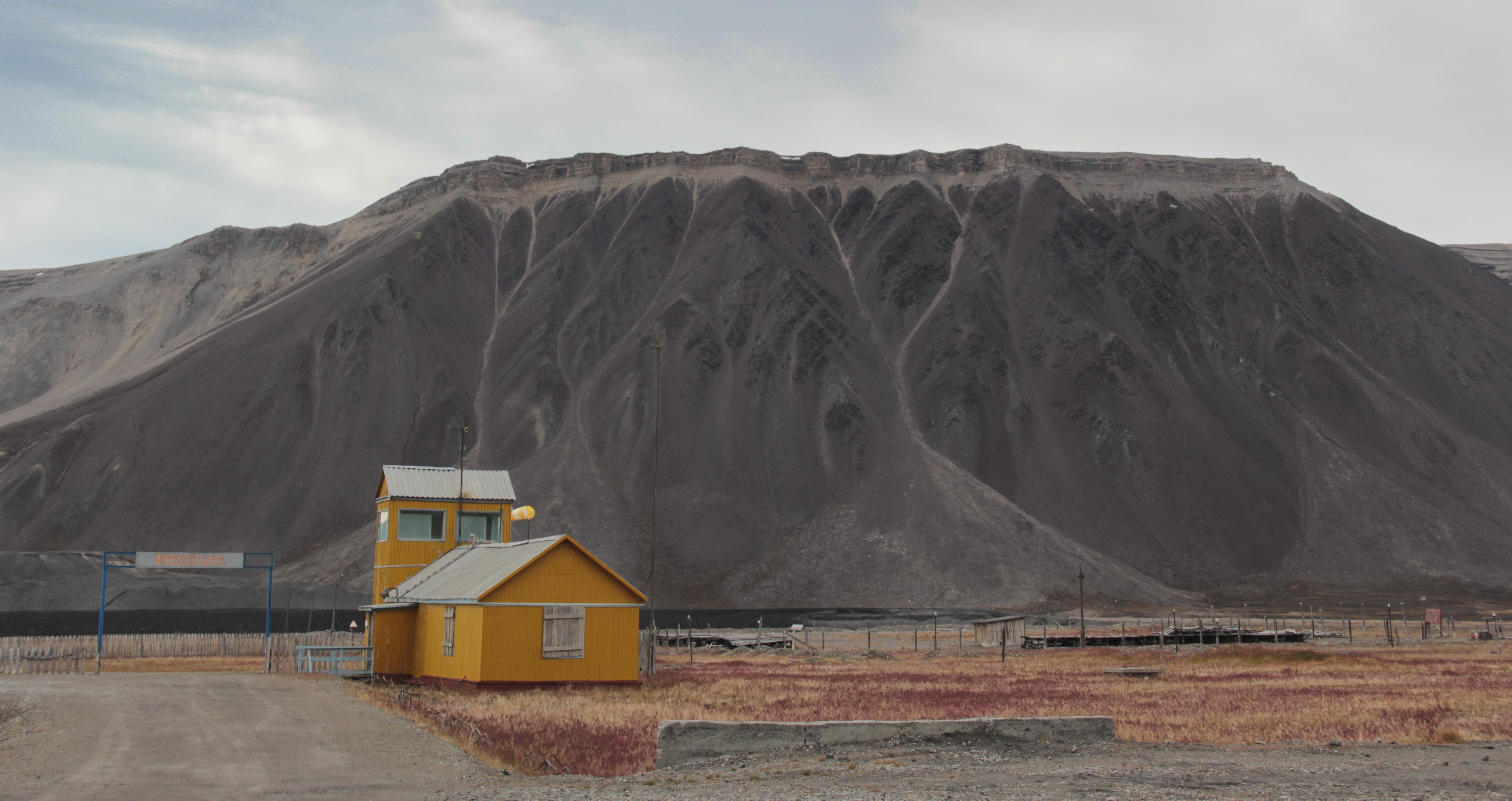
Perched on the frigid edge of the world, Pyramiden is a Soviet-era mining town located in Norway’s Svalbard archipelago—just 800 miles from the North Pole. Founded by Sweden but later sold to the Soviet Union, the town was developed into a fully functioning community in the Arctic wilderness. It had everything a remote mining colony could need: a cultural center, sports halls, greenhouses, and even the world’s northernmost statue of Lenin. But when the coal ran out in the late 1990s, the settlement was abandoned practically overnight. What’s astonishing is how perfectly preserved it remains. Thanks to the freezing climate, items like books, children’s toys, and typewriters still sit untouched in offices and apartments. The school’s piano is silent but intact, and the empty swimming pool echoes with the ghost of laughter. Surrounded by icy fjords and stark tundra, the town feels like a frozen stage set—half science fiction, half time capsule. Today, a few caretakers maintain the site for curious visitors, and guided tours provide a rare glimpse into life on the edge of civilization, locked in permafrost and memory.
12. Ta Prohm – Siem Reap, Cambodia

Ta Prohm is the jungle-draped jewel of Cambodia’s Angkor Wat complex—and perhaps the most visually iconic. While many nearby temples have been fully restored, Ta Prohm has been deliberately left in a state of partial ruin, allowing nature to weave its slow magic. Giant silk-cotton and strangler fig trees burst through stone walls, their roots snaking around ancient carvings with both power and grace. Moss and lichen paint the sandstone green, while shafts of light slice through the jungle canopy to illuminate centuries-old reliefs. Originally built in the late 12th century as a monastery and university, Ta Prohm once housed over 12,000 people. Now, it's a place of sublime stillness. There are no crowds, no loudspeakers—only the sounds of birds and rustling leaves. Popularized in films like Tomb Raider, the temple has become a symbol of romantic ruin, where history and nature embrace rather than compete. To wander here is to feel like an explorer in a forgotten world—one that continues to live, breathe, and inspire awe with every step.
13. The Orpheum Theatre – New Bedford, Massachusetts, USA
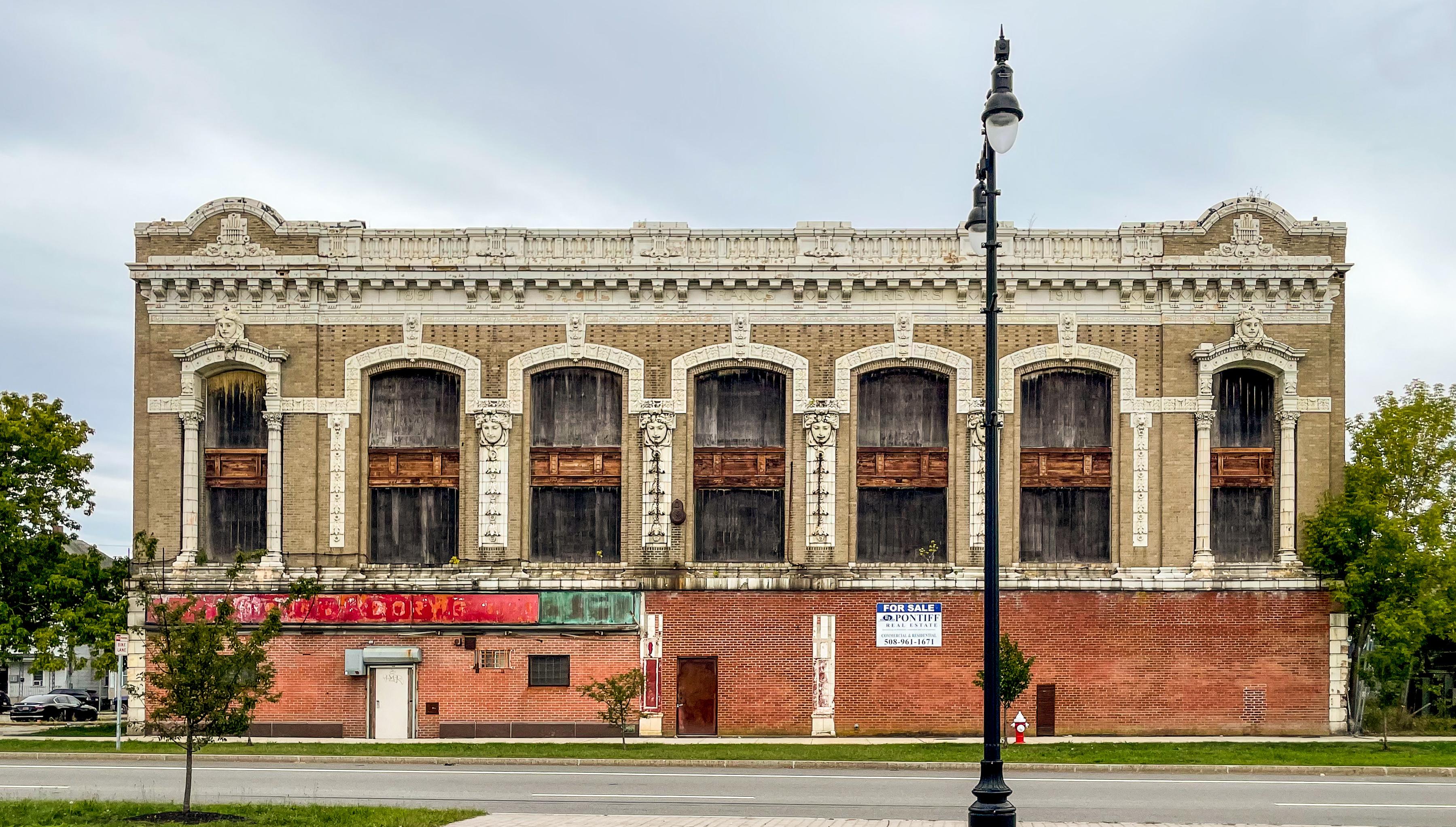
Built in 1912 during America’s golden age of theater, the Orpheum Theatre in New Bedford once echoed with the applause of vaudeville audiences and the elegant strains of a live orchestra. Its Beaux-Arts architecture featured ornate plasterwork, grand staircases, and a proscenium arch that dazzled under warm, flickering lights. Over the decades, the Orpheum adapted to changing tastes, screening silent films and talkies before eventually closing in the 1950s. It’s remained largely abandoned since, though parts were sporadically used for storage or community events. Today, the Orpheum’s faded opulence lends it an unforgettable aura. Dust clings to its tattered velvet seats, while fractured mirrors and gold-leaf detailing catch the dim light like whispers from another era. The stage still stands—its curtains torn, yet somehow majestic—ready to host the ghosts of performers long gone. Preservationists have worked to raise awareness and funds for restoration, and urban explorers continue to document its poetic decay. The Orpheum is more than a crumbling theater—it’s a love letter to the power of performance, memory, and the resilience of beauty.
14. Vozdvizhenka Estate – Kaluga, Russia
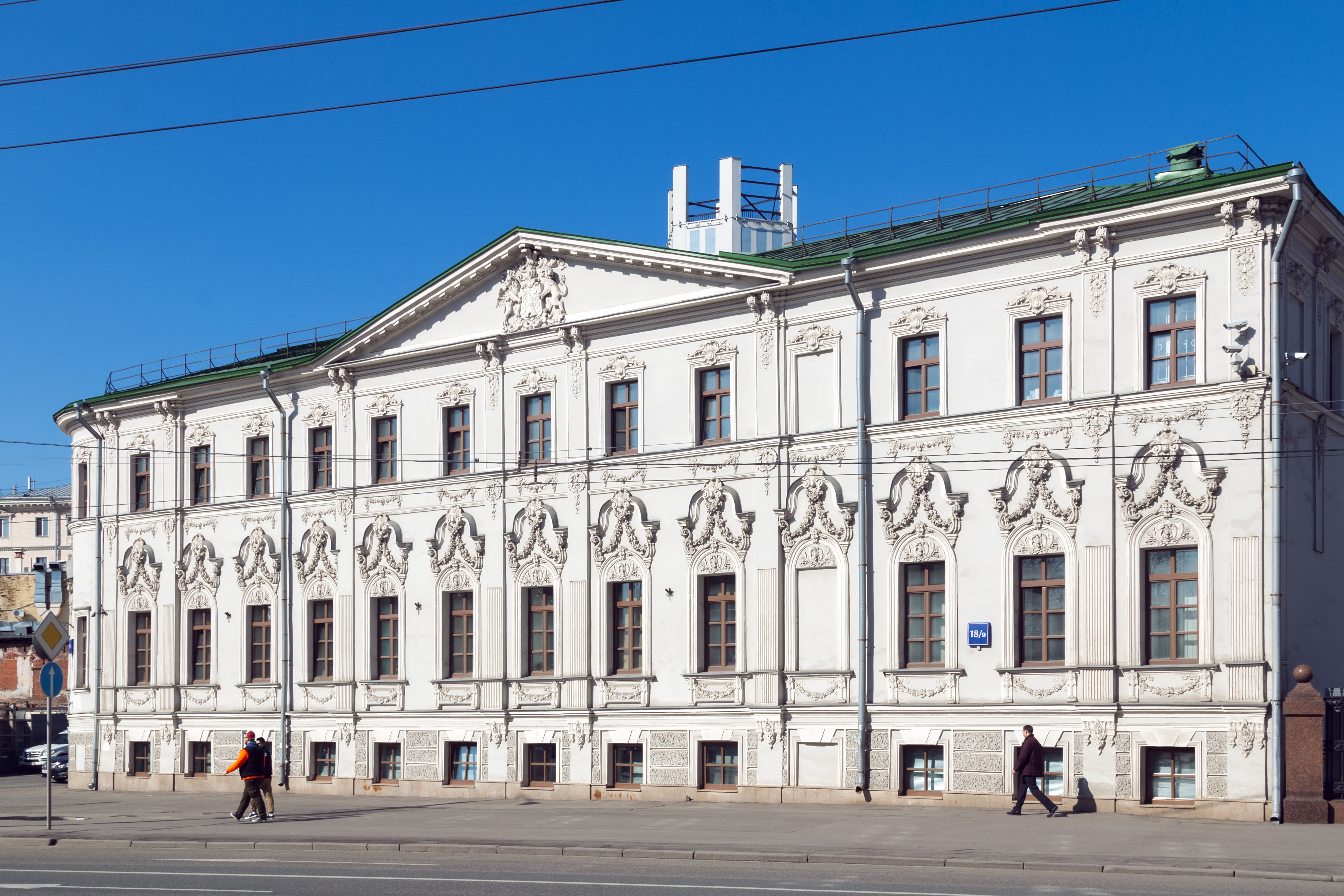
Hidden deep in the forests of Kaluga Oblast, the Vozdvizhenka Estate is a neoclassical mansion straight out of a Russian fairytale. Built in the late 18th century for a noble family, the estate once featured sweeping gardens, a grand ballroom, and frescoed ceilings that rivaled the most opulent palaces of St. Petersburg. After the Russian Revolution, however, it fell into disuse—converted to a boarding school, then abandoned altogether in the Soviet era. With no one to maintain it, nature crept in, and decay took root. Yet even in ruin, Vozdvizhenka remains breathtaking. Towering birch trees frame its crumbling façade like cathedral columns. Wildflowers spill across its once-manicured lawns, and faded frescoes peek through cracked plaster, hinting at the estate’s lost elegance. The roof has collapsed in parts, allowing rain and snow to seep in—but this only adds to the romantic melancholy. It’s a place where time slows, where you can almost hear distant music echoing from a forgotten waltz. For those who venture here, Vozdvizhenka offers more than a photo op—it offers a moment suspended in poetry.
15. Canfranc International Railway Station – Huesca, Spain

Imagine stepping into a lost palace disguised as a train station. Hidden high in the Spanish Pyrenees, Canfranc Station boasts an immense, ornate building larger than some airports, built in the 1920s for international travel. Its grand halls, once buzzing with passengers and whispers of WWII espionage, fell silent as routes closed. Today, parts are being restored, but much remains untouched—a monumental testament to forgotten ambition, its elegant decay framed by mountain peaks. Sunlight streams through vast arched windows onto dusty floors, echoing with the ghosts of journeys never completed. It’s a breathtaking collision of Beaux-Arts grandeur and mountain solitude.
16. Maunsell Sea Forts – Thames Estuary, UK
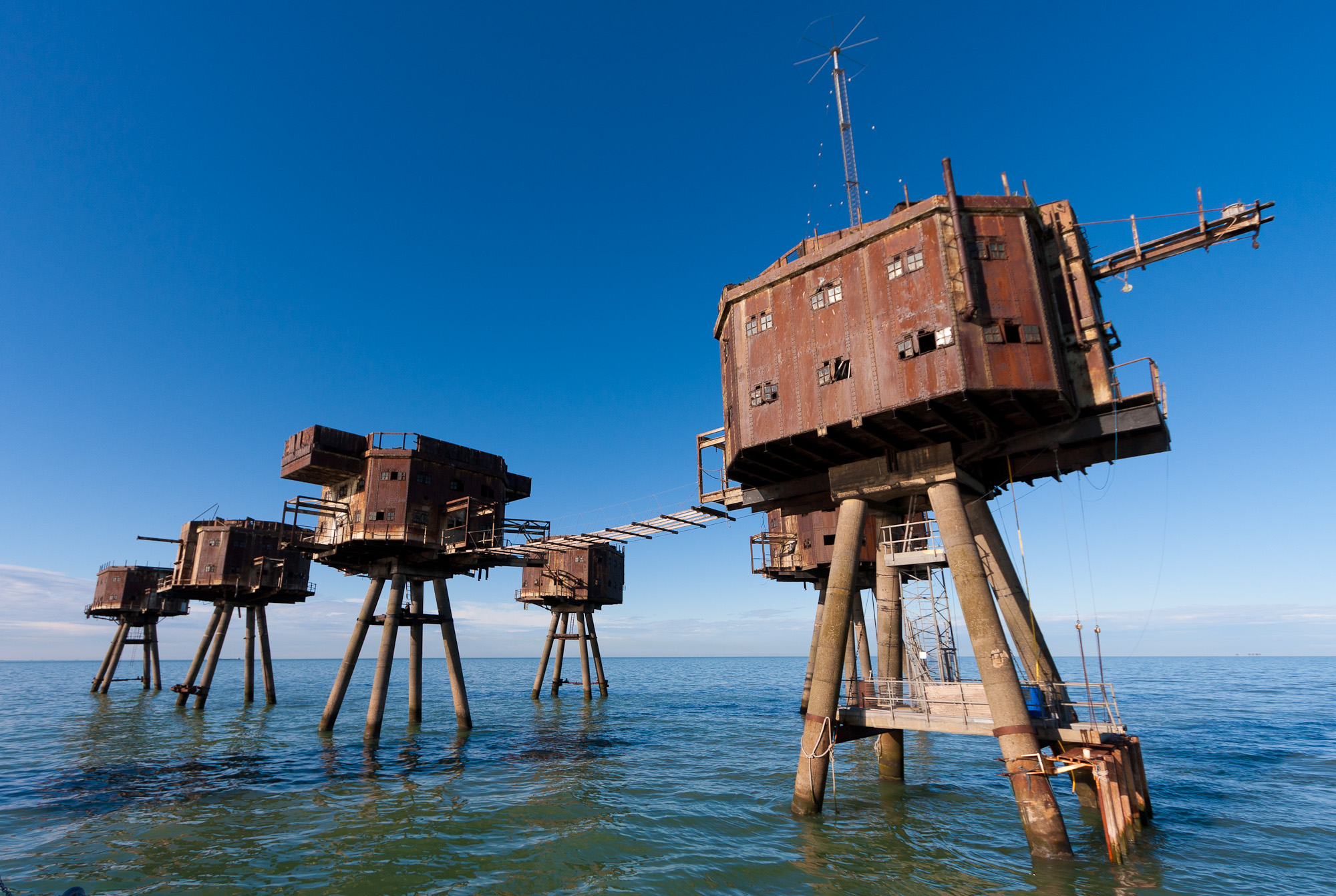
Rising like skeletal invaders from the grey waters of the Thames Estuary, the Maunsell Sea Forts are haunting relics of World War II. These clusters of interconnected anti-aircraft towers were built to defend Britain from aerial attacks. Decommissioned in the 1950s, they were briefly home to pirate radio stations before being abandoned entirely to the waves and wind. Their rusting, otherworldly structures, standing defiant on stilted legs against the tide, evoke a unique blend of military history and science fiction. They are stark, isolated monuments to wartime ingenuity, slowly surrendering to the relentless sea.
17. Kayaköy – Fethiye, Turkey
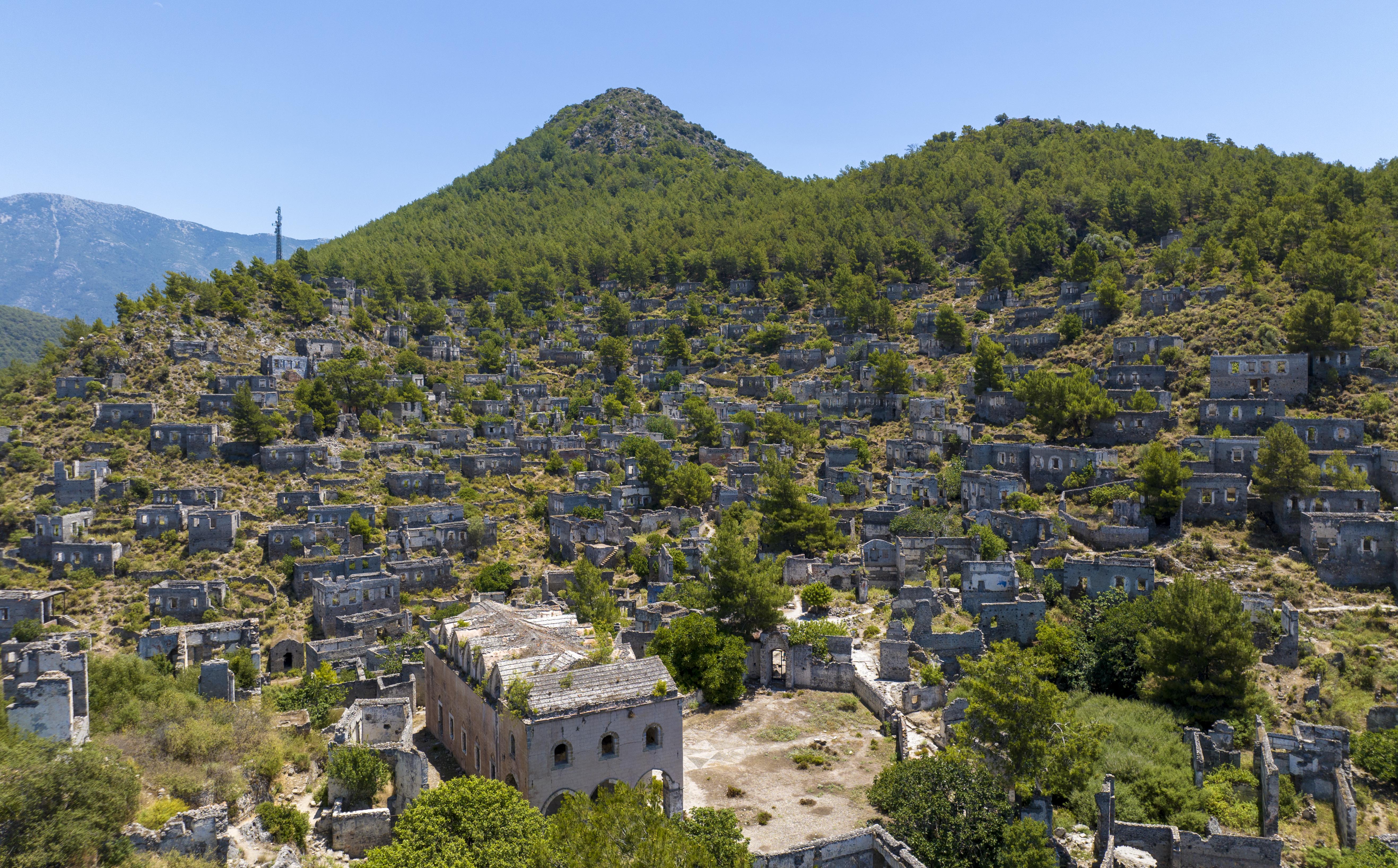
Clinging to a hillside overlooking the Turkish coast lies Kayaköy, a hauntingly beautiful ghost village. Once a thriving community of Anatolian Greeks known as Levissi, its thousands of residents were forced to leave during the 1923 population exchange with Greece. What remains are hundreds of stone houses, churches, and chapels, now roofless and weathered, tumbling down the slope in poetic decay. Walking the overgrown paths feels like wandering through a memory, the silence broken only by the wind. The sheer scale and preserved emptiness under the Mediterranean sun make Kayaköy an incredibly moving, picturesque monument to displacement and lost community.
18. Bodie State Historic Park – California, USA
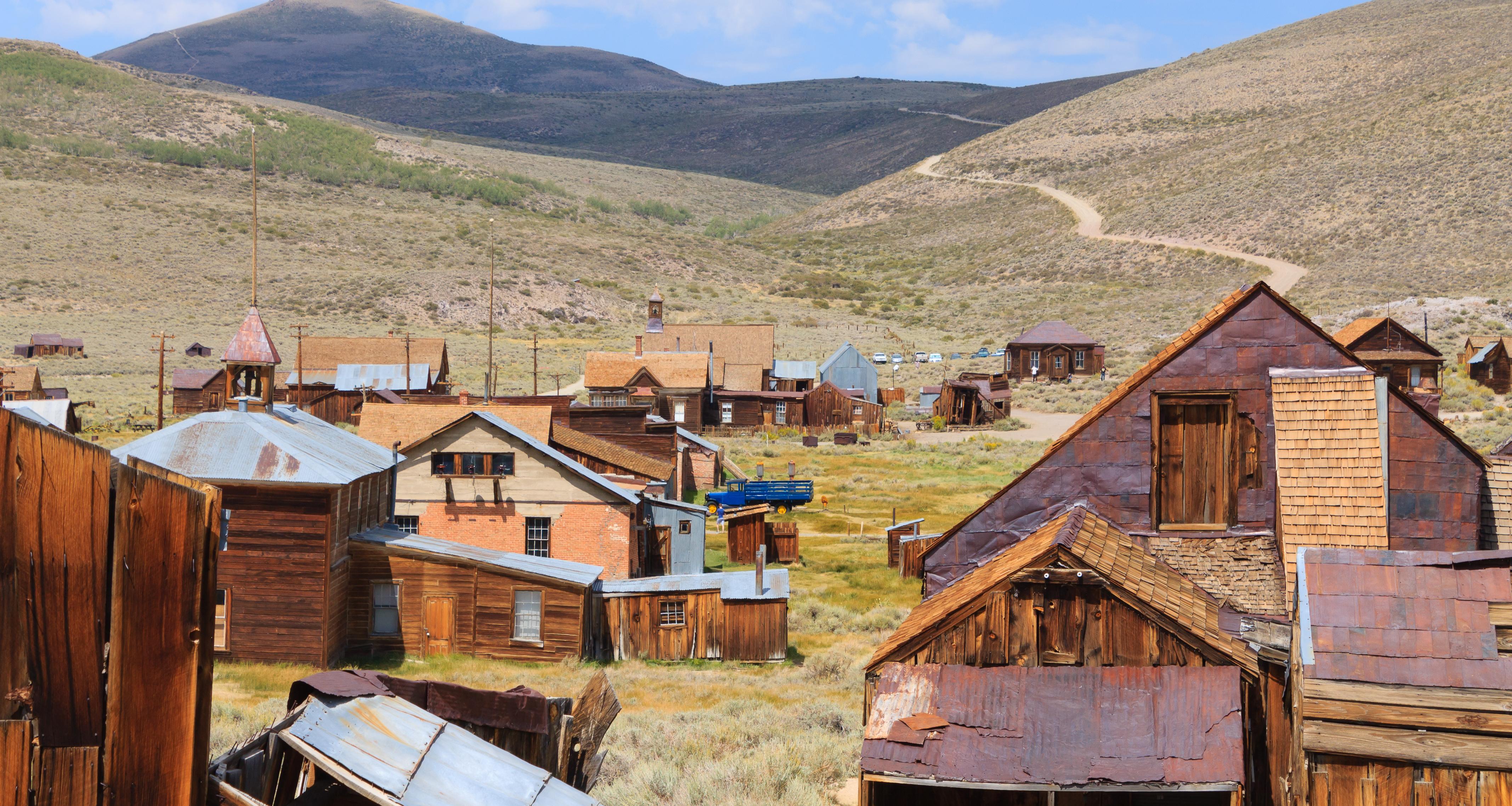
Frozen in time high in the Sierra Nevada mountains, Bodie is a gold rush ghost town preserved in a state of "arrested decay." Unlike manicured historical sites, Bodie feels raw and authentic, as if residents simply vanished mid-task. Interiors remain furnished with dusty belongings left behind when the mines dried up and harsh winters drove people away. Peek through windows to see tables set for dinner or goods still lining store shelves. Surrounded by a stark, windswept landscape, Bodie offers a visceral connection to the boom-and-bust reality of the Wild West, more hauntingly real than romanticized tales.
19. Pidhirtsi Castle – Lviv Oblast, Ukraine
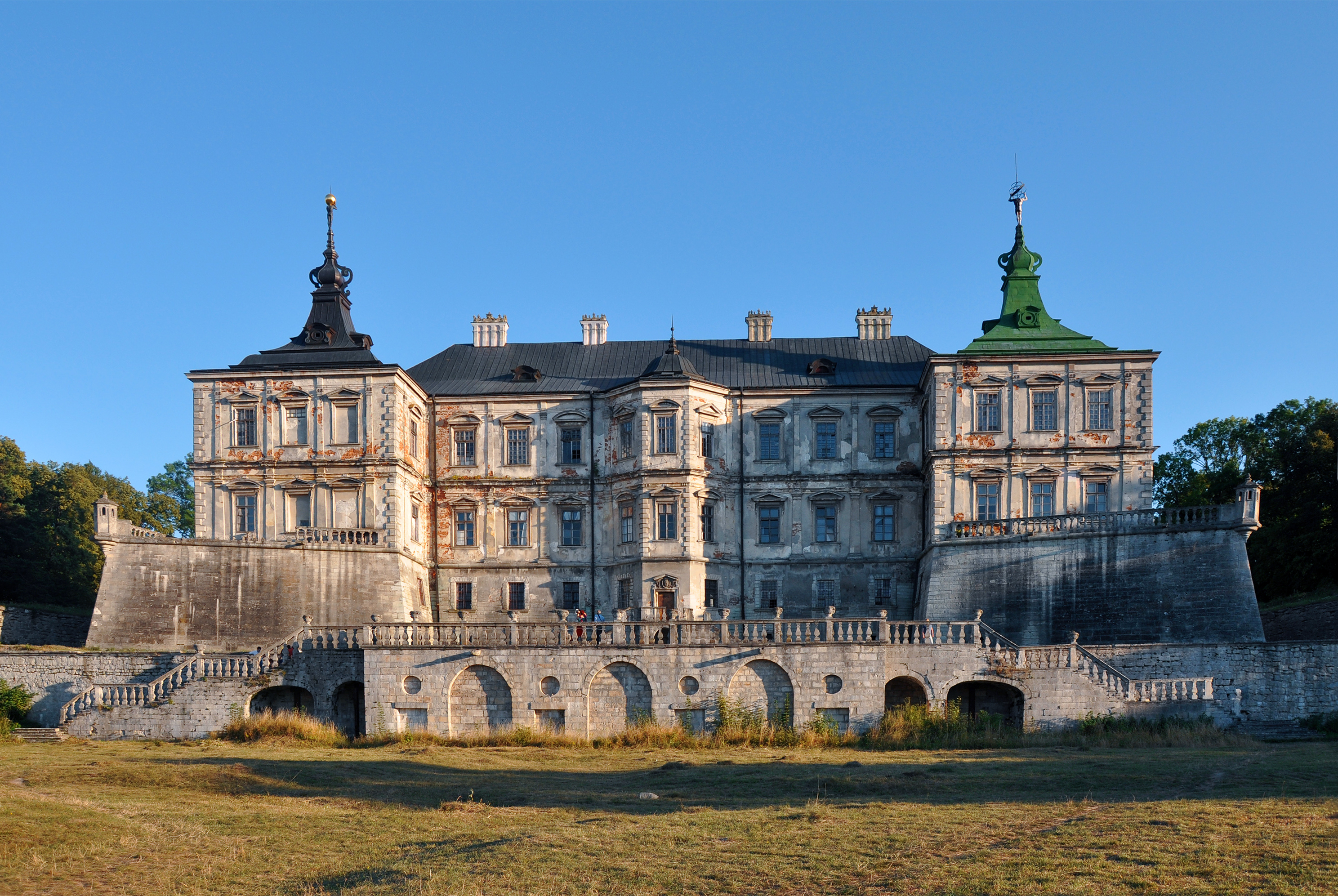
A vision of faded Renaissance splendor, Pidhirtsi Castle stands forlornly amidst the Ukrainian landscape. Built in the 17th century, this once-magnificent palace boasted intricate fortifications and opulent interiors. However, wars, fires, and neglect during the Soviet era stripped it bare, leaving behind a beautiful, wounded shell. Its elegant silhouette, complete with towers and arched loggias, still commands attention, while the visible scars tell tales of centuries of turmoil. Though partly ruined, the castle retains an undeniable romanticism and historical gravity, a poignant symbol of resilience and the enduring power of architectural grace against adversity.
20. Shime Coal Mine Winding Tower – Fukuoka, Japan
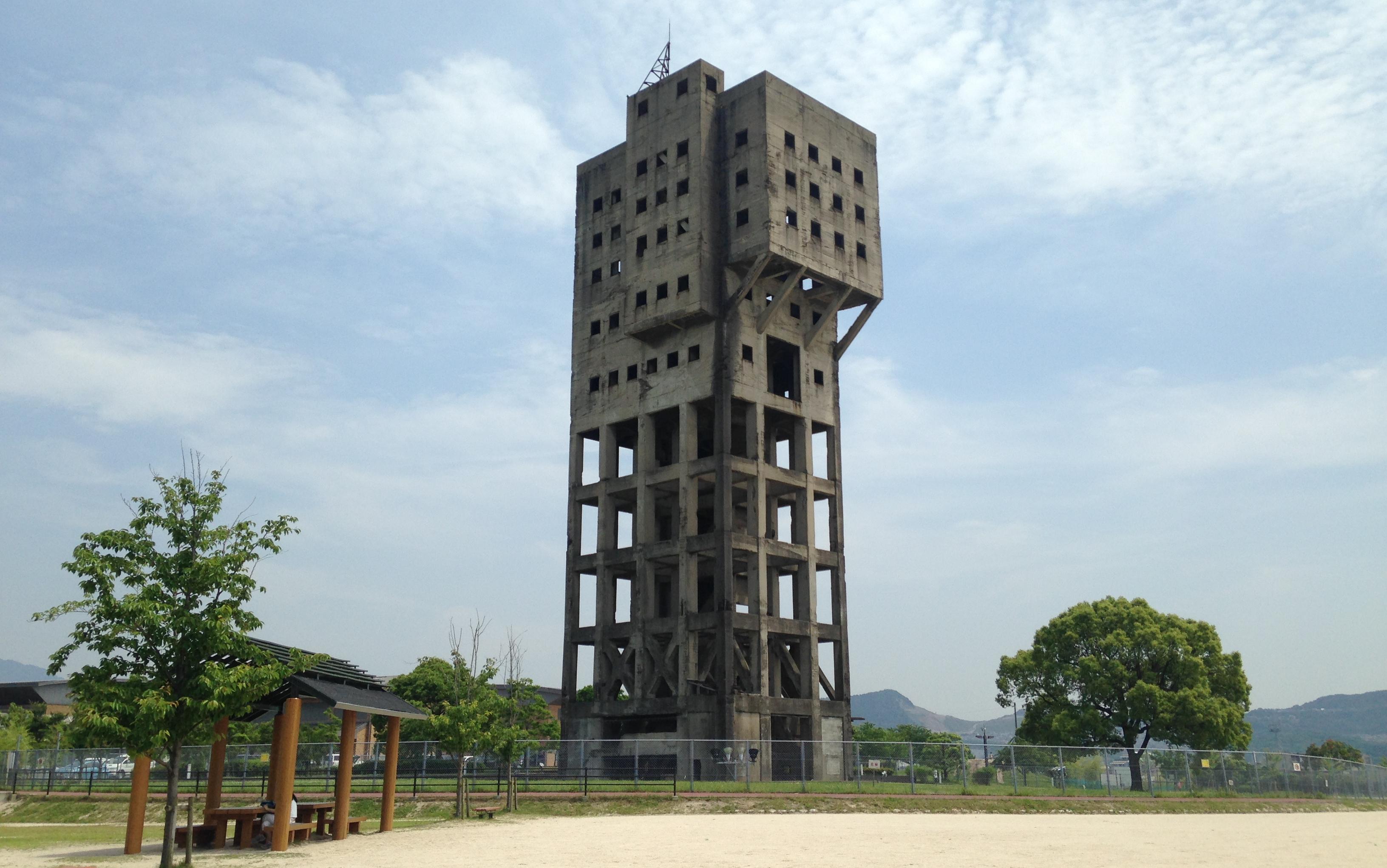
Dominating the landscape near Fukuoka, the Shime Coal Mine's winding tower is a stark, imposing monument to Japan's industrial past. This colossal concrete structure, built in the 1940s, once facilitated the descent and ascent of miners into the earth. After the mine closed in the 1960s, the tower was left standing—a powerful example of brutalist architecture and engineering prowess. Its sheer scale and geometric design create a unique, almost sculptural presence against the sky. It serves as a silent, stoic reminder of the region's coal-mining heritage and the human effort that once powered a nation.
21. St. George's Church (Kostel sv. Jiří) – Luková, Czech Republic
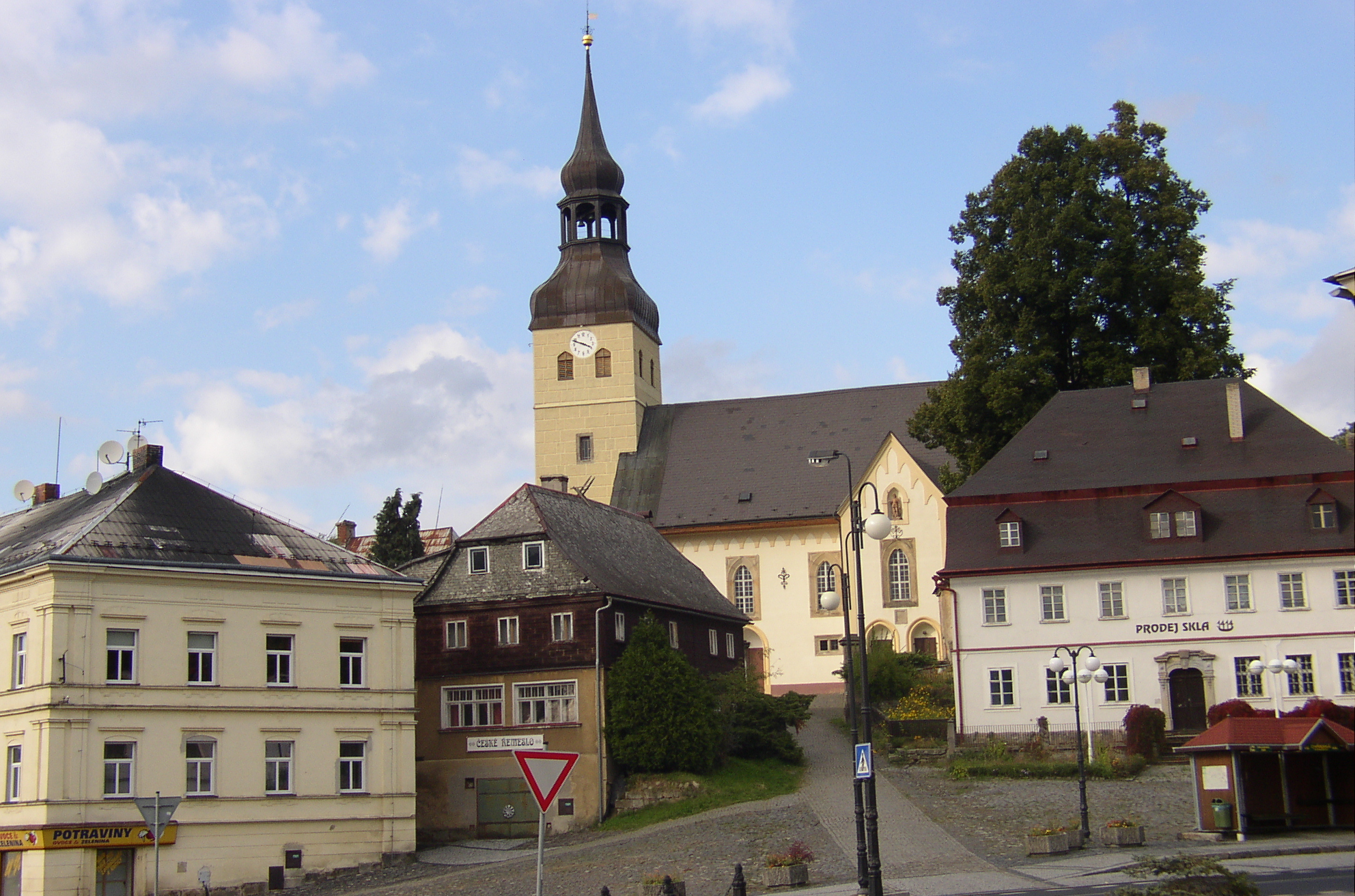
This dilapidated 14th-century church in the small Czech village of Luková gained global attention for its haunting art installation. The roof collapsed decades ago, leading to its abandonment. Seeking to save the building (and perhaps highlight its spectral atmosphere), artist Jakub Hadrava filled the pews with eerie, life-sized plaster figures draped in white cloth, appearing like ghostly congregants frozen in prayer. The combination of the crumbling architecture—peeling paint, broken windows—and these unsettling figures creates a uniquely chilling and unforgettable experience, blurring the lines between decay, art, and the supernatural.
22. Teufelsberg – Berlin, Germany
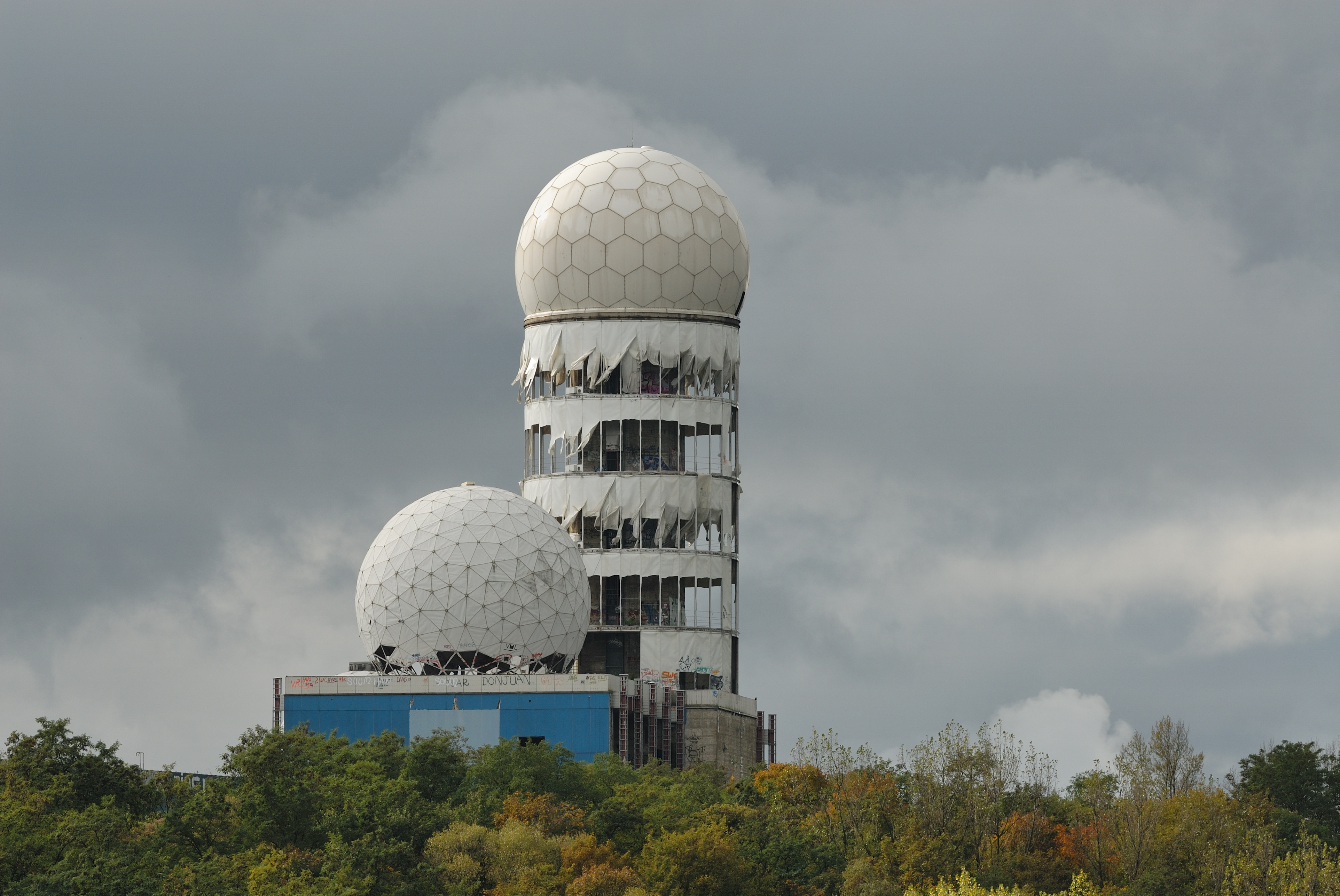
Rising incongruously from Berlin's Grunewald forest, Teufelsberg ("Devil's Mountain") is a man-made hill built from WWII rubble, topped with the skeletal remains of a massive US Cold War listening station. Its iconic geodesic domes, once used to eavesdrop on Soviet communications, are now decaying canvases for vibrant graffiti art. Exploring the abandoned buildings offers layers of history—from Nazi foundations beneath to Cold War secrets within—while the summit provides stunning panoramic views of Berlin. It's a fascinating intersection of modern history, urban exploration, street art culture, and eerie architectural forms.
23. Wünsdorf Military Complex (Forbidden City) – Brandenburg, Germany

Just south of Berlin lies Wünsdorf, a sprawling, abandoned military complex once known as the "Forbidden City." It served as the headquarters for the Soviet Armed Forces in Germany for nearly 50 years. This vast site contains an astonishing array of decaying structures: barracks, officers' clubs, theaters, swimming pools, schools, and even statues of Lenin reclaimed by nature. Wandering through its deserted streets and exploring the empty, echoing buildings feels like stepping into a lost world frozen at the end of the Cold War. Its sheer size and preserved Soviet-era architecture offer a unique glimpse into a hidden chapter of history.
24. Rum Orphanage (Prinkipo Greek Orthodox Orphanage) – Büyükada, Turkey
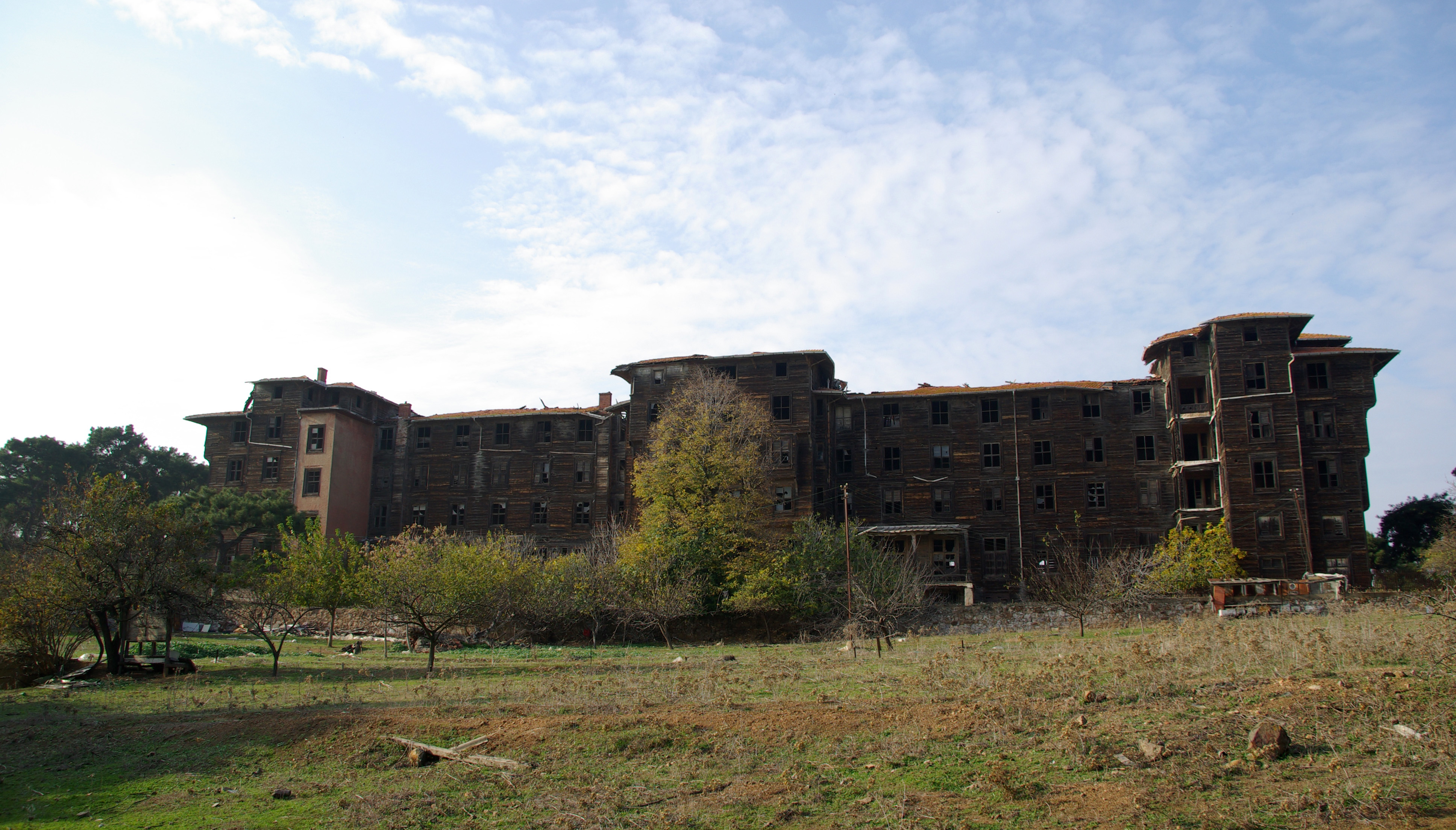
Perched atop a hill on Büyükada, one of Istanbul's Princes' Islands, sits the Prinkipo Greek Orthodox Orphanage, believed to be one of the largest wooden buildings in Europe. Constructed in the late 19th century, initially as a luxury hotel casino before becoming an orphanage, it housed thousands of children until its closure in the 1960s. Decades of neglect have left the intricate woodwork decaying and the vast structure vulnerable to the elements. Its sheer scale and faded grandeur, combined with its poignant history and serene island setting, make it a deeply atmospheric and visually arresting landmark.
25. Sathorn Unique Tower, Bangkok, Thailand
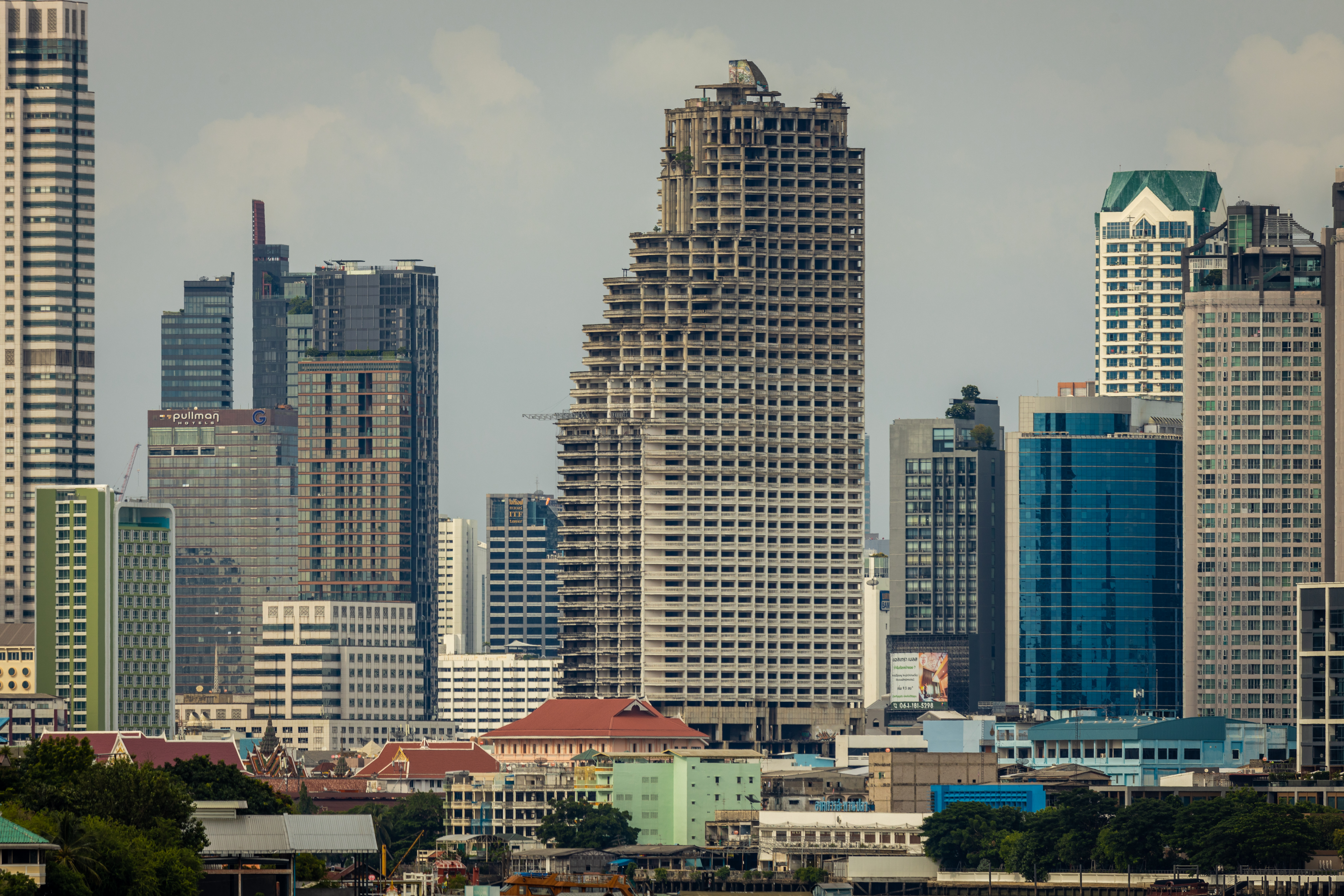
Stabbing into the Bangkok skyline, the Sathorn Unique Tower is a colossal monument to ambition halted by economic crisis. This 49-story luxury condominium was nearly complete when the 1997 Asian Financial Crisis struck, leaving it an empty, concrete shell. Now, its ghostly, unfinished balconies and gaping window sockets offer an eerie panorama of the bustling city below. Locally known as the "Ghost Tower," it has become an iconic symbol of urban decay and a magnet for urban explorers, its raw structure slowly succumbing to the elements and graffiti, a stark reminder of fortunes lost.
26. SS Ayrfield (Homebush Bay), Sydney, Australia
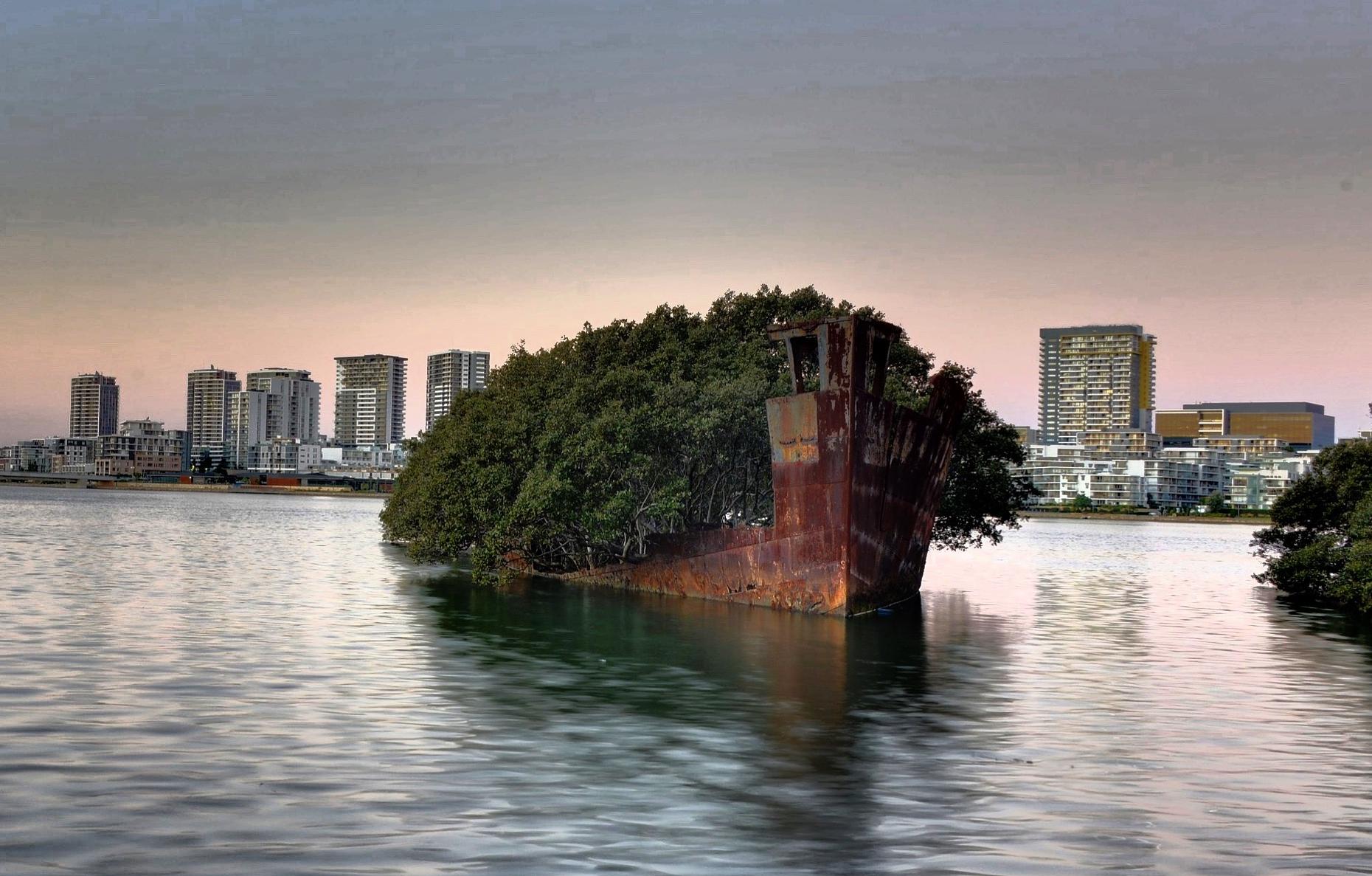
In Homebush Bay, once an industrial dumping ground near Sydney, lies a stunningly beautiful shipwreck: the SS Ayrfield. This decommissioned steam collier, along with several other decaying vessels, has transformed into a "floating forest." Mature mangrove trees sprout abundantly from its rusted hull, creating a surreal and picturesque fusion of industrial decay and vibrant nature. The verdant growth atop the skeletal ship, set against the backdrop of modern Sydney, offers a poignant visual metaphor for nature's resilience and its ability to reclaim man-made structures with surprising artistry.
27. City Hall Subway Station, New York City, USA

Beneath the hustle of New York City lies a perfectly preserved, yet almost forgotten, masterpiece: the original City Hall subway station. Opened in 1904 and closed in 1945 due to its curved platform being unsuitable for longer trains, its Guastavino tile arches, skylights, and elegant chandeliers remain largely untouched. Though off-limits for regular disembarking, glimpses can be caught on certain train turnarounds or special tours. It’s a silent, subterranean ballroom, a beautiful time capsule showcasing early 20th-century craftsmanship, eerily preserved just beyond the reach of daily commuters.
28. Villa Epecuén, Argentina
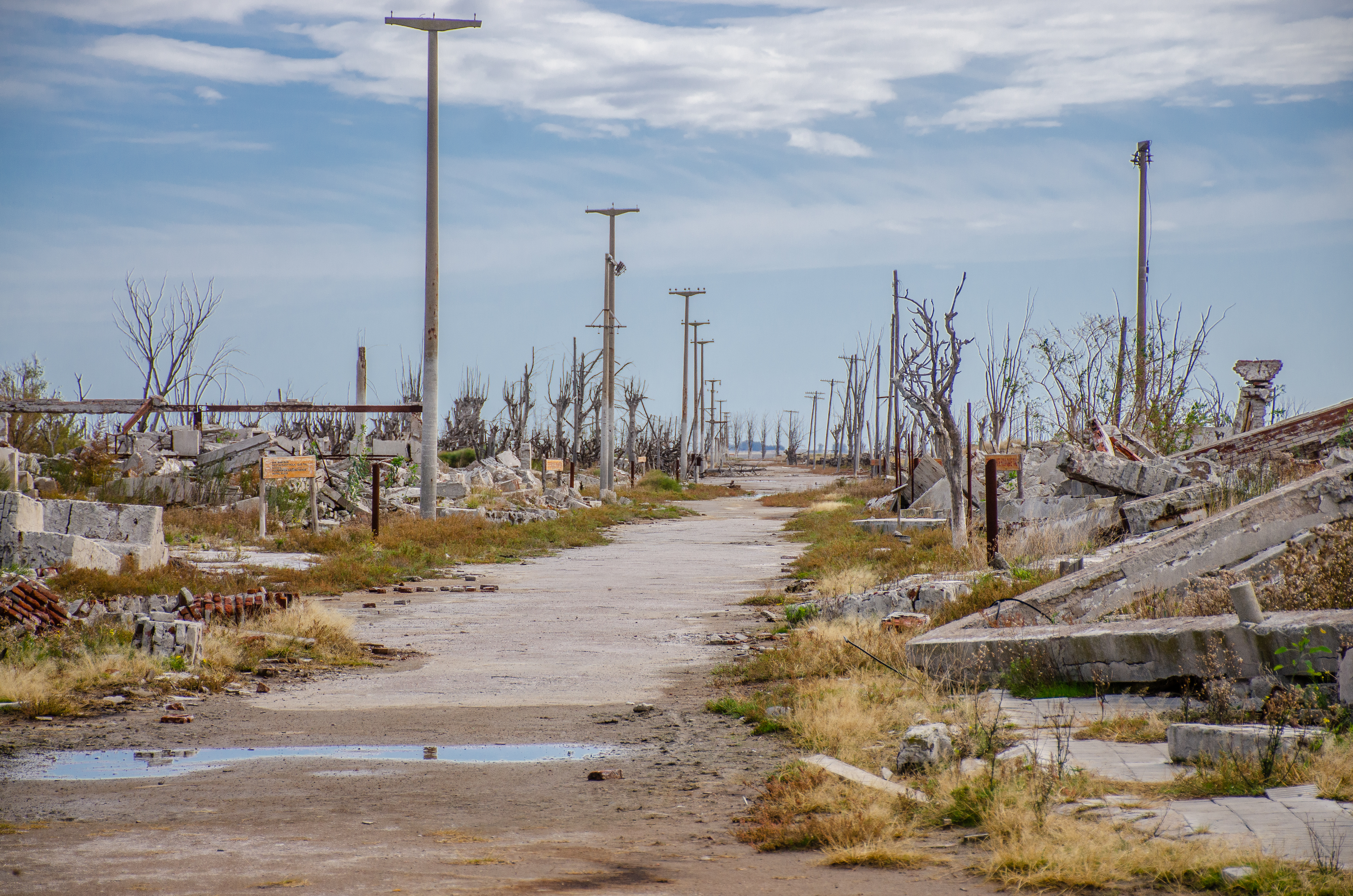
Once a bustling spa town on the shores of Laguna Epecuén, Villa Epecuén was tragically submerged by rising, salty lake waters in 1985. For nearly 25 years, it lay hidden beneath the corrosive brine. As the waters slowly receded, a ghostly, salt-encrusted landscape emerged. Skeletal trees, rusted car frames, and the eerie grid of former streets and building foundations now create a surreal, almost apocalyptic vista. The bleached white ruins stand as a stark testament to nature's power and the fragility of human settlements against overwhelming environmental forces.
29. Grytviken Whaling Station, South Georgia Island

On the remote, wildlife-rich island of South Georgia in the South Atlantic, Grytviken stands as a chilling monument to the once-thriving, brutal whaling industry. Abandoned in the 1960s, its rusted processing plants, decaying ships, and empty workers' barracks are eerily preserved by the cold Antarctic air. Giant whale bones litter the landscape, and seals now lounge amidst the industrial ruin. The site, also famous as Ernest Shackleton's final resting place, offers a profoundly atmospheric and sobering glimpse into a harsh chapter of human exploitation, now reclaimed by silence and vast, icy nature.
30. Plymouth, Montserrat

Dubbed a "modern-day Pompeii," Plymouth, the former capital of the Caribbean island of Montserrat, lies largely buried and abandoned following a series of devastating volcanic eruptions from the Soufrière Hills volcano, starting in 1995. Entire streets, government buildings, and homes were engulfed by pyroclastic flows and layers of ash, freezing a moment of life in time. Today, parts of the exclusion zone offer stark, haunting views of rooftops peeking through hardened mud and ash, a ghostly reminder of the community that was forced to flee nature's overwhelming power.
31. Kilchurn Castle, Scotland

Majestically situated on a picturesque peninsula of Loch Awe, the ruins of Kilchurn Castle are the epitome of Scottish romantic decay. Built in the mid-15th century by Clan Campbell, this once formidable stronghold, complete with a five-story tower house and barracks, fell into disuse in the 18th century. A lightning strike hastened its ruin. Now roofless and weathered, its stone walls reflected in the tranquil loch, often shrouded in mist, Kilchurn offers a hauntingly beautiful and iconic image of Scotland's turbulent past, inspiring artists and photographers for generations.
32. Fordlândia, Brazil
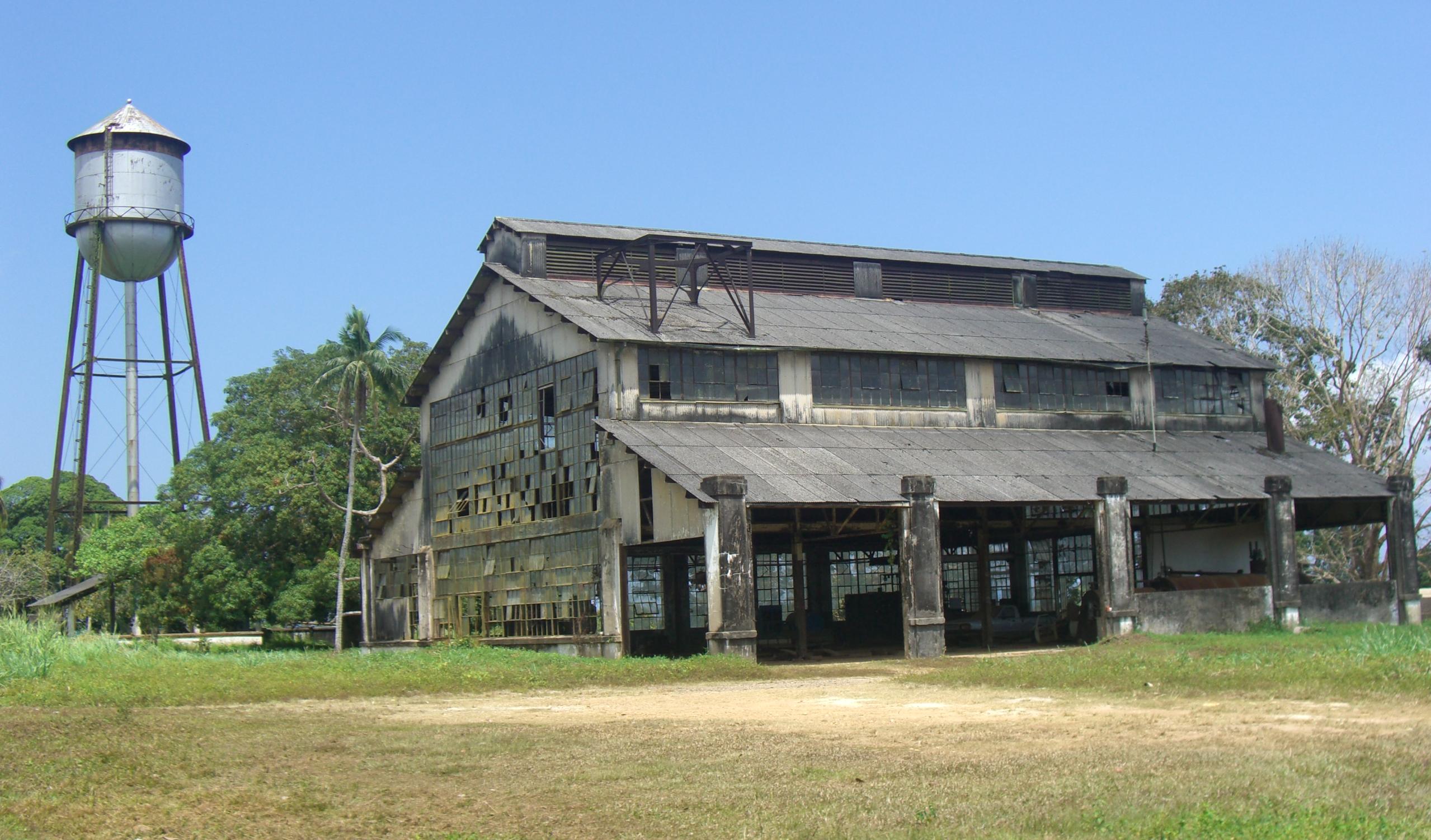
Deep within the Amazon rainforest lies Fordlândia, the ambitious but ultimately doomed utopian vision of Henry Ford. Established in the late 1920s to secure a source of cultivated rubber for his automobile empire, Ford attempted to recreate a quintessential American town, complete with manicured lawns, a hospital, and dance halls, amidst the jungle. However, disease, cultural clashes, and difficulties in cultivating rubber led to its failure and abandonment by the mid-1940s. Today, its decaying American-style buildings, slowly being consumed by the relentless jungle, stand as a surreal testament to industrial idealism clashing with tropical reality.
33. Balestrino, Italy

Perched on a Ligurian hillside, the old village of Balestrino is a captivating medieval ghost town, its stone houses and castle ruins silently overlooking the valley. While the exact reasons for its final abandonment in the 1950s are debated (often attributed to seismic instability), the result is an eerily preserved settlement. Wandering its overgrown, empty streets feels like stepping back centuries. The crumbling church tower and the imposing, yet decaying, Del Carretto castle dominate the skyline, creating a poignant atmosphere of mystery and forgotten history, a photographer's dream of rustic desolation.
34. Sarajevo Olympic Bobsleigh Track, Bosnia and Herzegovina
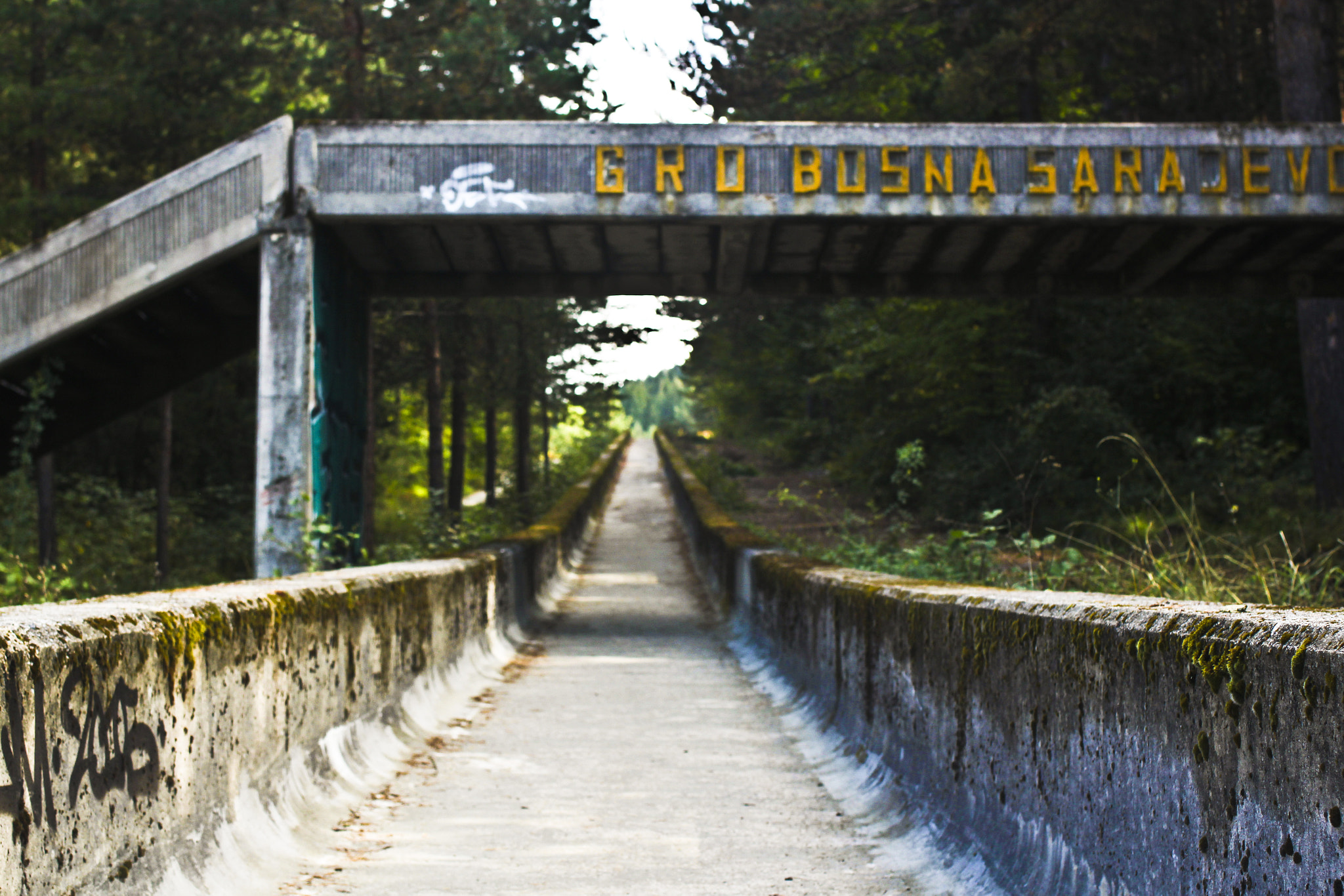
Carved into Mount Trebević above Sarajevo, the 1984 Winter Olympics bobsleigh and luge track is now a colossal concrete serpent reclaimed by nature and art. Damaged during the Bosnian War in the 1990s, when it was used as an artillery position, its massive, curving structure was left abandoned. Today, the forest encroaches on its edges, while the track itself has become an ever-evolving canvas for vibrant graffiti artists. Walking its length is a surreal experience, a potent symbol of fleeting Olympic glory, wartime devastation, and artistic rebirth amidst decay.
35. Anı, Turkey: The Ghost Capital of 1001 Churches
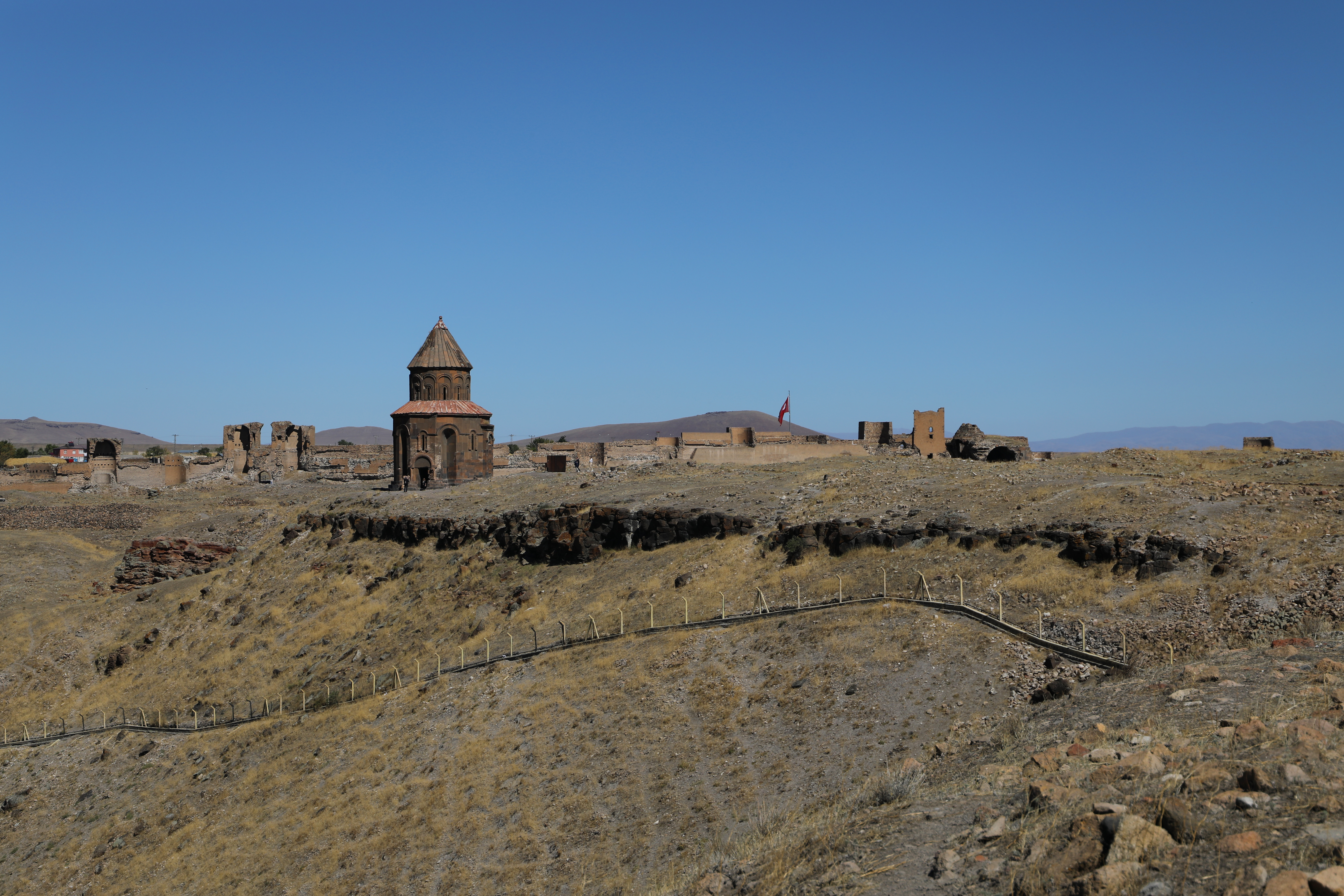
On a remote plateau near the Armenian border lies the breathtaking ruined city of Anı. Once a magnificent medieval metropolis and capital of a vast Armenian kingdom, it was a vital Silk Road hub. Sacked by Mongols, ravaged by earthquakes, and eventually abandoned centuries ago, its remaining cathedrals, mosques, palaces, and fortifications, though weathered, still showcase stunning architectural grandeur against a dramatic, windswept landscape. This UNESCO World Heritage site whispers tales of immense wealth, power, and devastating loss, its stone structures slowly surrendering to the vast Anatolian plains.
36. Centralia, Pennsylvania, USA: The Town Above an Eternal Fire

An eerie stillness hangs over Centralia, a Pennsylvania borough largely abandoned due to an underground coal mine fire that has been smoldering since 1962. Once a typical mining town, residents were relocated as the fire spread, creating sinkholes, dangerous gases, and buckled roads (including the infamous "Graffiti Highway," now mostly covered). Today, only a handful of structures remain amidst overgrown lots and steaming fissures. Nature, alongside the persistent subterranean blaze, is slowly erasing Centralia, leaving a haunting landscape and a stark reminder of environmental consequences.
37. Kennecott Mines, Alaska, USA: Copper Dreams in Icy Wilderness
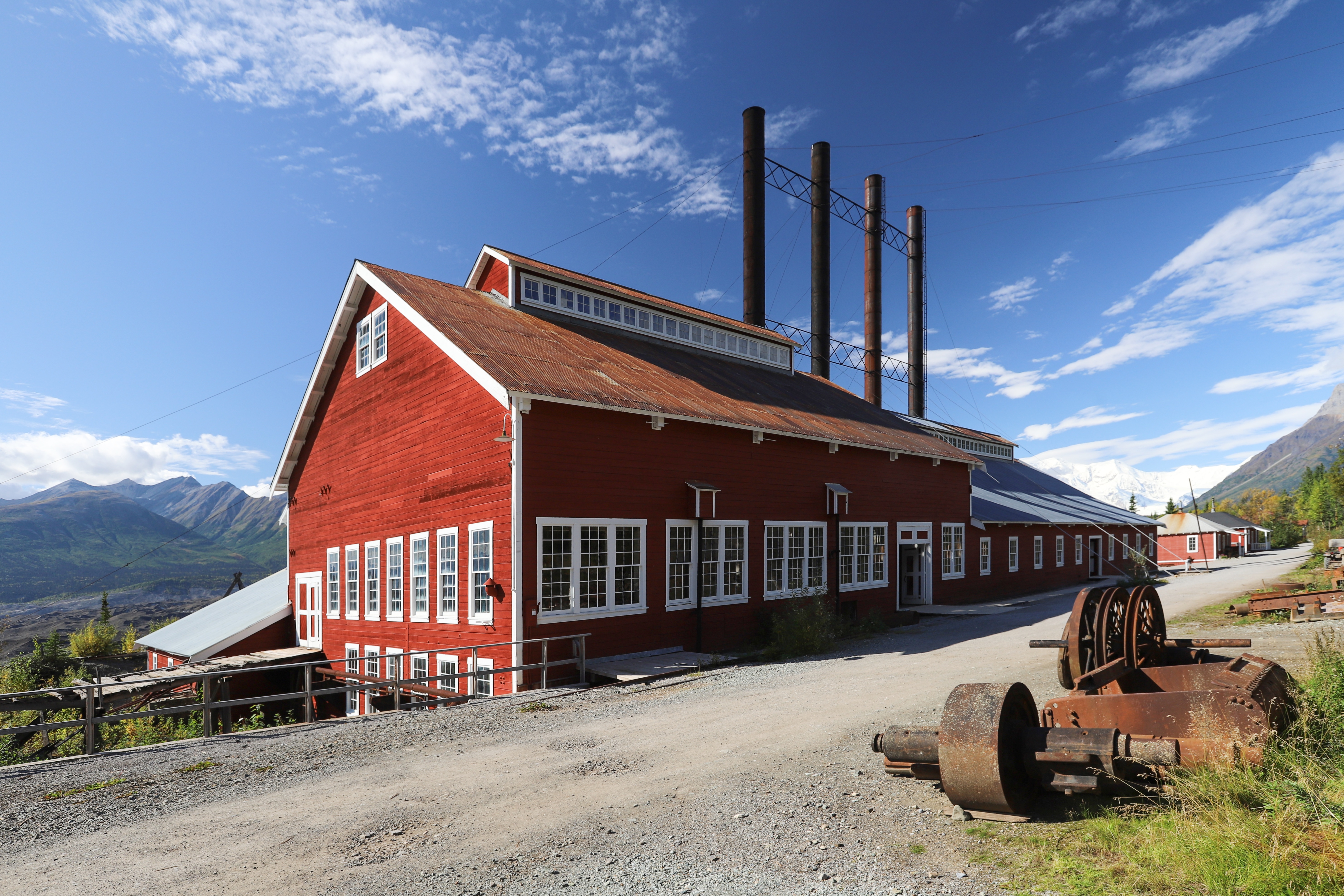
Deep within Alaska’s vast Wrangell-St. Elias National Park, the striking red buildings of the Kennecott Mines cling dramatically to the mountainside. This National Historic Landmark was a bustling copper mining camp in the early 20th century, complete with a massive mill and company town. Abandoned in 1938 when the high-grade ore depleted, its impressive wooden structures are remarkably preserved by the cold, dry air, yet slowly weathering against a backdrop of glaciers and towering peaks – a testament to human ambition in a raw, unforgiving wilderness.
38. Ross Island, Andaman and Nicobar Islands, India: Colonial Grandeur Swallowed by Jungle
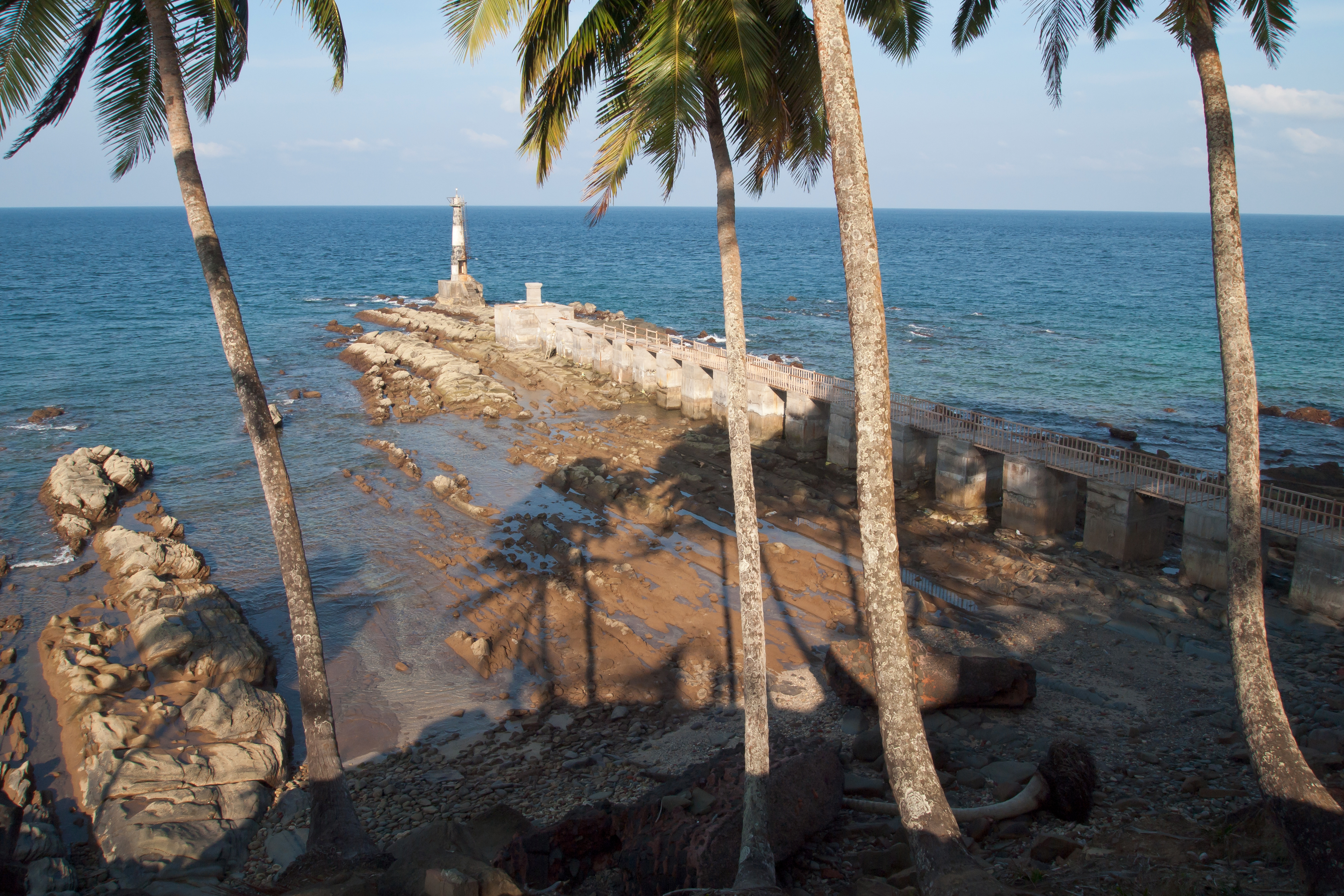
Once the opulent administrative headquarters of British rule in the Andaman Islands, Ross Island (Netaji Subhash Chandra Bose Island) is now a stunning spectacle of colonial ruins being dramatically reclaimed by tropical jungle. Grand Victorian buildings, including a church, ballroom, and chief commissioner's bungalow, are entwined with the massive, serpentine roots of fig trees. Peacocks and deer roam freely through these decaying halls. This small island offers a powerful visual narrative of empire's decline and nature’s persistent, beautiful reconquest in a remote, Indian Ocean setting.
39. Oradour-sur-Glane, France: A Frozen Echo of Wartime Tragedy
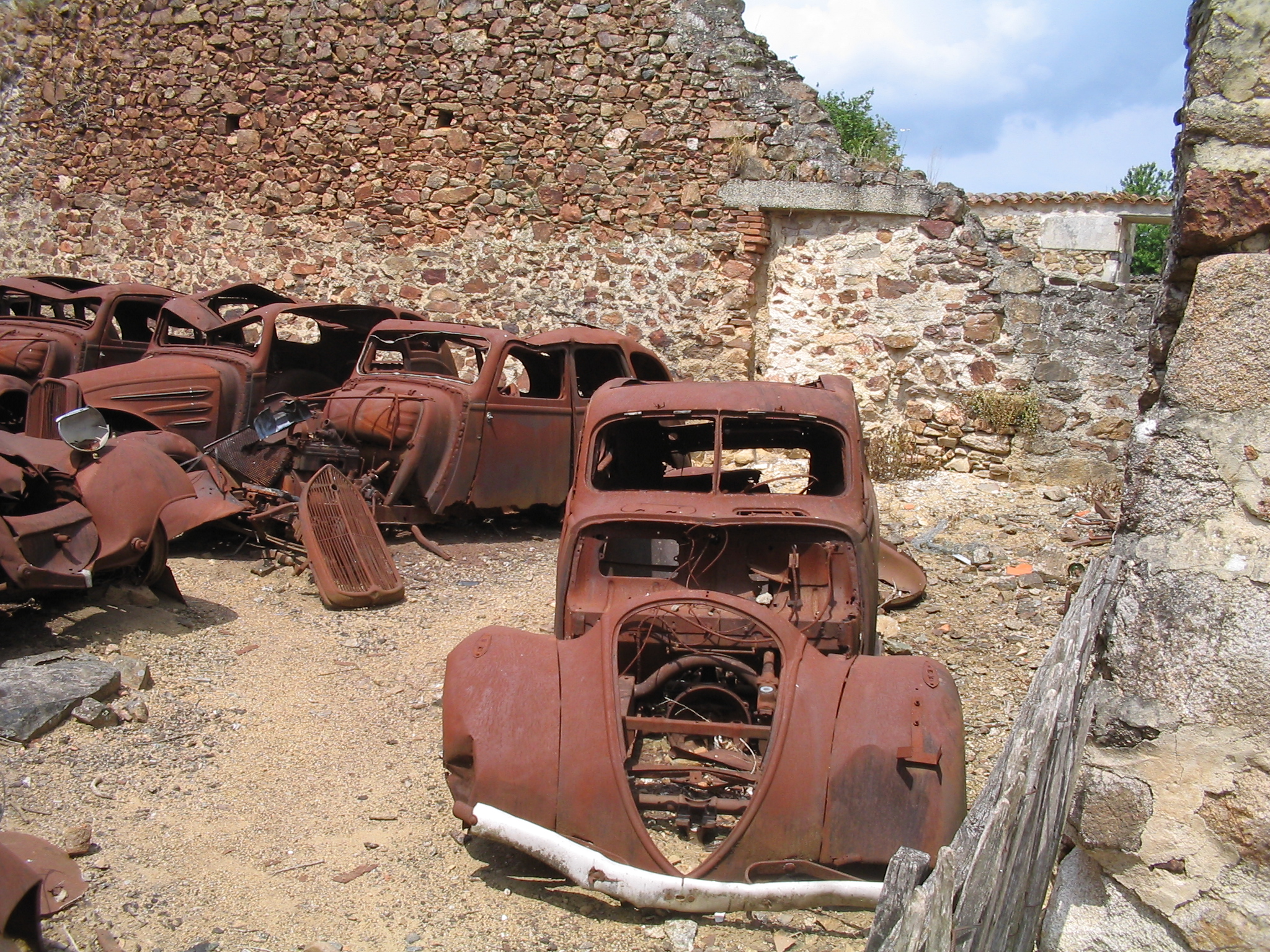
The village of Oradour-sur-Glane in France stands as a permanent, chilling memorial. In June 1944, Nazi SS troops massacred nearly all its inhabitants and razed the village. After the war, President Charles de Gaulle ordered it be left untouched, a "village martyr." Today, rusted cars, crumbling homes with belongings still inside, and the bullet-scarred church remain frozen in that horrific moment. Nature has begun to soften the edges with moss and wildflowers, but the profound silence and preserved devastation offer a deeply moving and vital lesson from history.
40. Val Jalbert, Quebec, Canada: A Roaring Twenties Mill Town Preserved
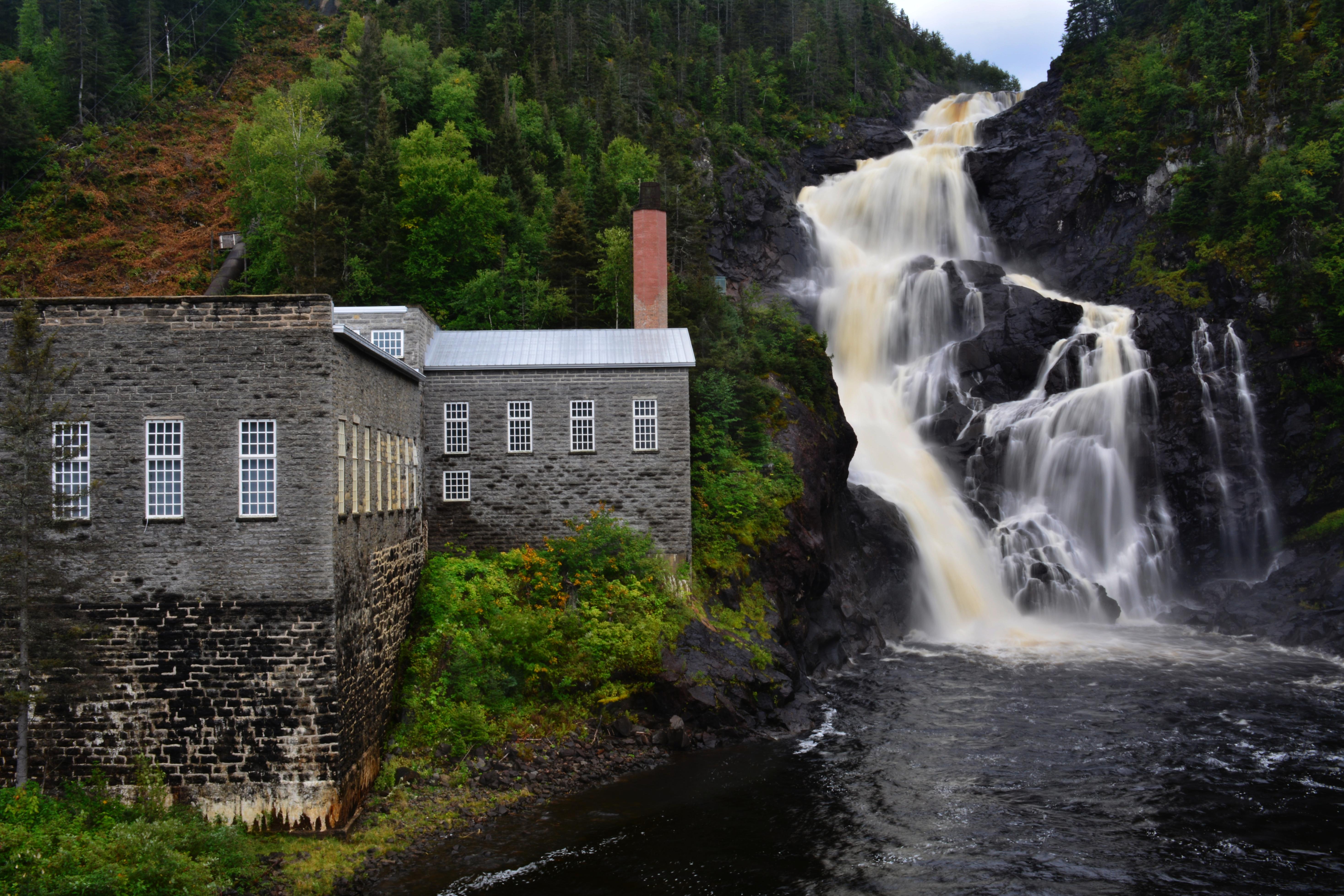
Step back into the 1920s at the remarkably preserved company town of Val Jalbert in Quebec. Once a bustling pulp mill village, it was abandoned in 1927 when the mill closed. Unlike many ghost towns left to decay, Val Jalbert has been meticulously maintained as a historical village and tourist attraction. Visitors can explore original workers' homes, the general store, the school, and the impressive Ouiatchouan Falls that powered the mill. It offers an authentic, immersive glimpse into early 20th-century industrial life, "abandoned" from its original purpose yet vibrantly telling its story.
41. Bannerman Castle, Pollepel Island, New York, USA: Hudson River's Ruined Fortress
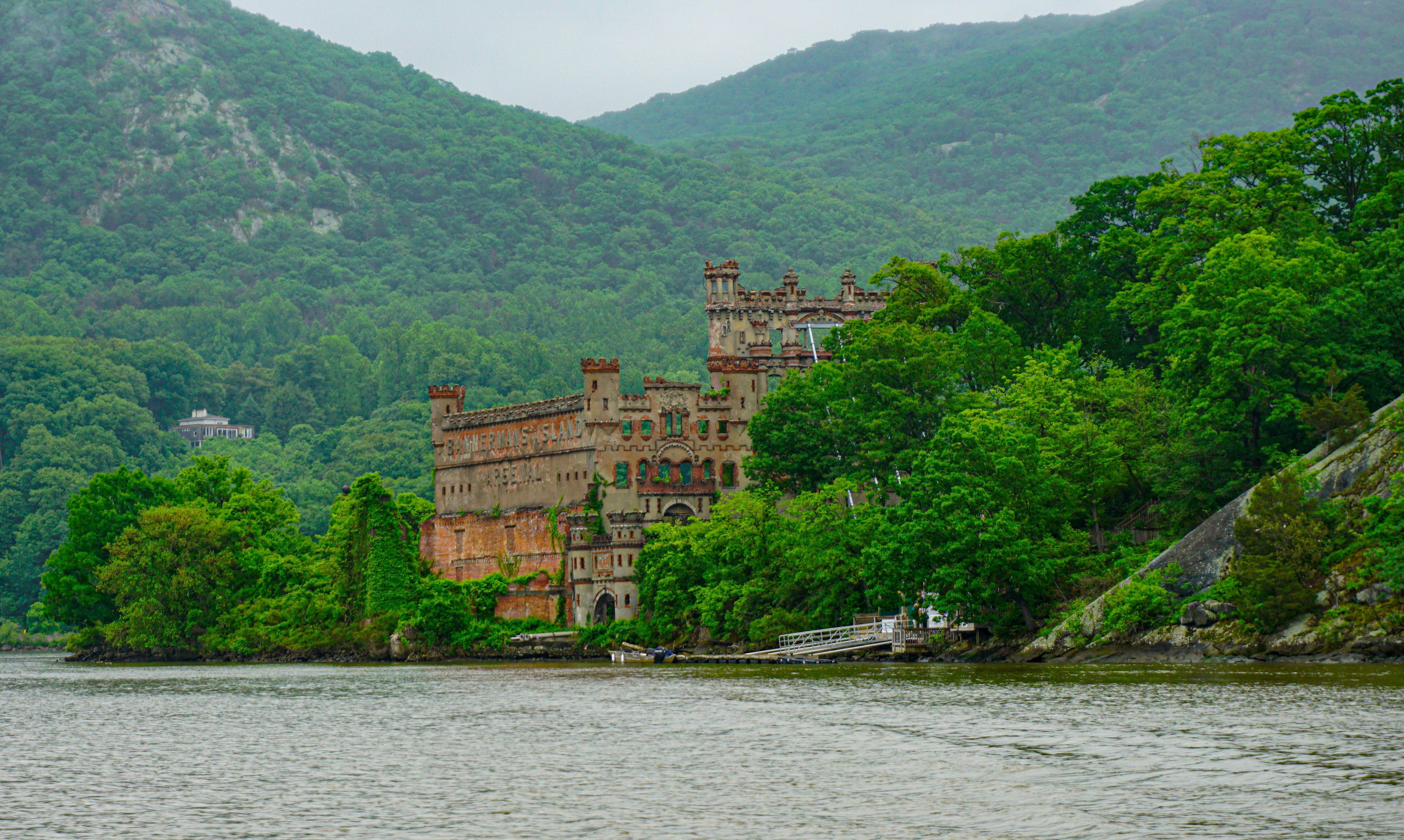
Rising like a forgotten European keep from Pollepel Island in the Hudson River, Bannerman Castle is the ruin of an early 20th-century military surplus warehouse. Francis Bannerman VI built this elaborate, castle-like structure to store his wares. Explosions, fires, and neglect over decades have led to its picturesque decay. Its crumbling stone towers and walls, visible from a distance and accessible via guided boat tours, offer a dramatic and romantic spectacle, a unique piece of American eccentricity slowly surrendering to the elements amidst scenic river views.
42. Salton Sea's Decaying Shores, California, USA: Accidental Oasis, Eerie Aftermath
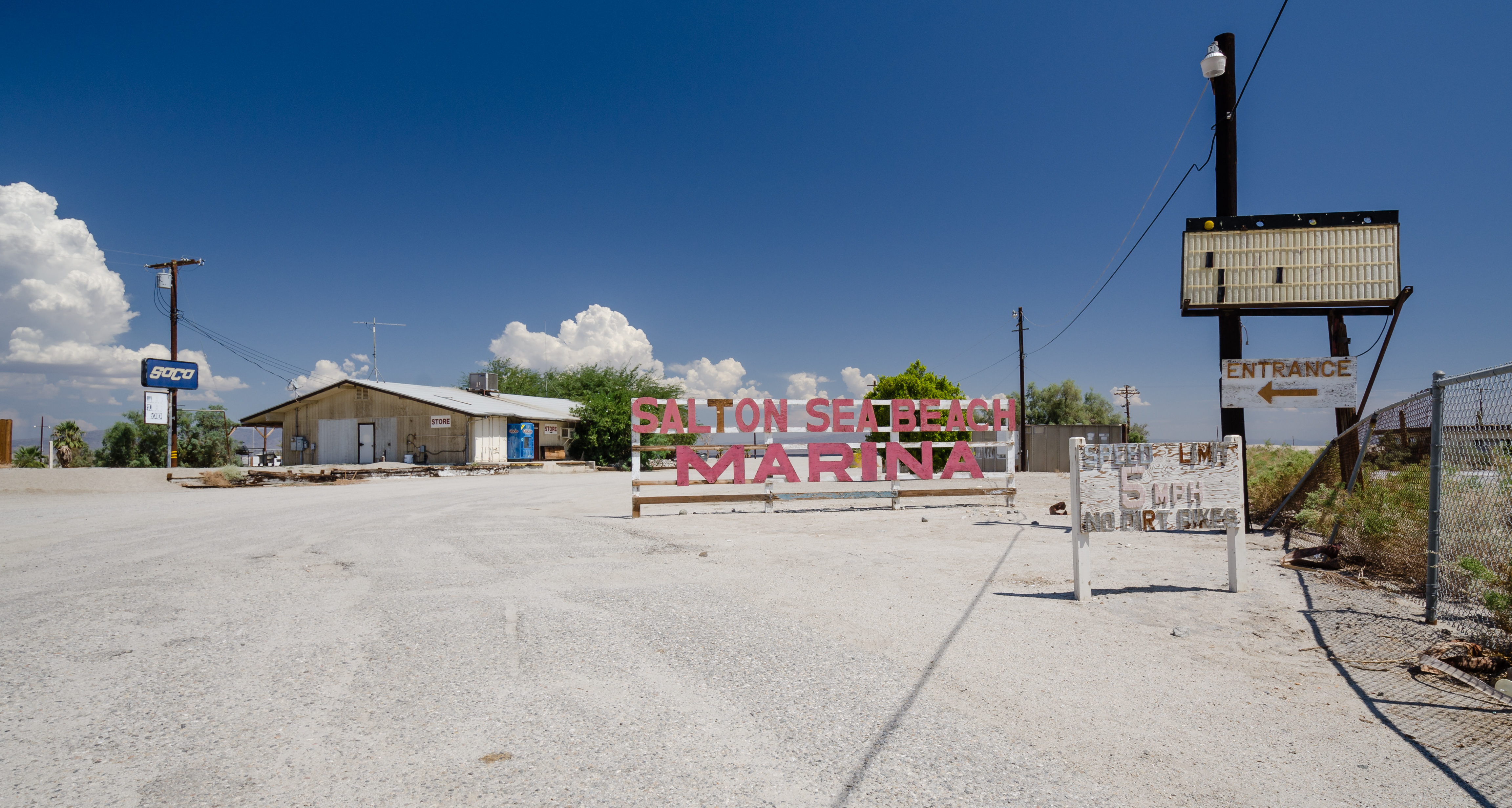
California's largest lake, the Salton Sea, was accidentally created in the early 20th century and briefly flourished as a vibrant resort destination. However, increasing salinity, agricultural runoff, and receding waters led to ecological decline and the abandonment of its once-glamorous lakeside communities like Bombay Beach. Today, the shoreline is an eerie, almost alien landscape of salt-encrusted beaches, skeletal remains of piers and buildings, and vast bird populations adapting to the unique conditions. It’s a striking, melancholic testament to environmental change and human ambition meeting harsh reality.
43. Radio Kootwijk, Netherlands: Art Deco Giant in the Heathland
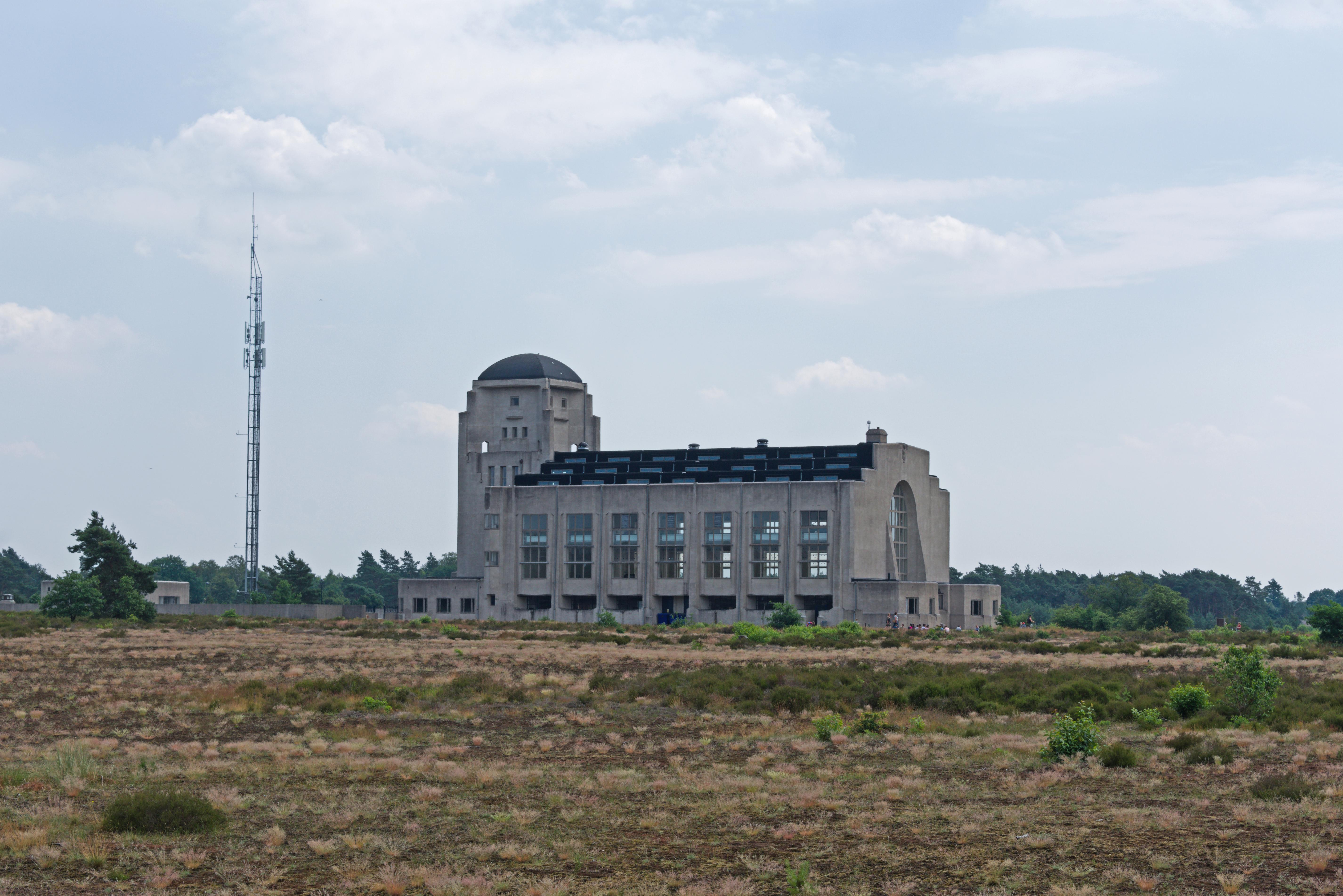
Standing like a concrete sphinx in the heart of the Veluwe National Park, Radio Kootwijk is a monumental Art Deco former shortwave radio transmitting station. Built in the 1920s to facilitate communication with the Dutch East Indies, its imposing central building, with its soaring turbine hall, is a masterpiece of early modern architecture. Decommissioned and largely unused for decades, its isolation amidst windswept heath and forest makes it an incredibly atmospheric and visually striking landmark, a testament to bygone communication technology and grand design.
44. Tskaltubo Spa Resorts, Georgia: Soviet Sanatoria in Grand Decay

The spa town of Tskaltubo in Georgia was once a jewel of Soviet-era balneotherapy, boasting grand sanatoriums and bathhouses built in imposing Stalinist Empire style, frequented by high-ranking officials. After the Soviet Union's collapse and regional conflicts, many of these monumental structures were abandoned or became temporary housing for internally displaced persons. Exploring these vast, decaying complexes—with their echoing halls, crumbling colonnades, and faded grandeur being slowly reclaimed by nature—offers a unique, poignant glimpse into a bygone era of state-sponsored leisure and subsequent upheaval.
Where Decay Becomes Art

These 44 abandoned landmarks aren’t just relics of what once was—they're powerful reminders that beauty often flourishes in silence. Through the broken windows and ivy-covered walls, we glimpse the stories of those who came before and the forces of nature that reclaim all things. For travelers, artists, and dreamers alike, these haunting places are not endings, but invitations—to imagine, to reflect, and to rediscover the extraordinary in the forgotten.

